#commercially successful is not equal to objectively better music
Explore tagged Tumblr posts
Text
youtube
This is exactly what I mean. You can and should enjoy TS' music if you want to but these comparisons and superlatives are insane.
#rick beato#anti taylor swift#taylor swift#music#commercially successful is not equal to objectively better music#its just being able to game the system that is capitalism and modern social media#Youtube
38 notes
·
View notes
Text
The Importance of a Baby Development Program: A Guide for Modern Parents
As parents, giving your child the best start in life is a top priority. A baby development program is one of the most impactful ways to support early growth and milestones. These programs focus on mental, physical, emotional, and social development from infancy, setting the stage for a lifetime of learning.
From tummy time to sensory activities and language exposure, structured early development programs can guide caregivers in providing age-appropriate stimulation. In this blog, we’ll explore why these programs matter, what they include, and how to select the right one.

What Is a Baby Development Program?
A baby development program is a structured set of activities, routines, and practices designed to promote healthy growth in infants and toddlers. These programs can be home-based or facilitated by professionals and are tailored to the child's age and developmental stage.
They often include:
Sensory stimulation
Motor skills exercises
Cognitive tasks
Language interaction
Social bonding activities
Related keywords: infant growth, early learning, child milestones, baby cognitive skills
Unique fact: A 2023 study published in Early Childhood Research Quarterly found that babies enrolled in structured development programs demonstrated 17% faster cognitive processing speed by age two compared to those without structured developmental exposure.
Why Early Development Matters
The first three years of a child’s life are crucial. During this window, the brain forms over a million neural connections per second. A baby development program leverages this growth period through targeted stimulation, laying a strong foundation for future academic and emotional success.
Key benefits include:
Enhanced memory and learning capacity
Improved fine and gross motor skills
Better emotional regulation
Stronger parent-child bonding
Unique fact: According to the World Health Organization, early stimulation in the first year of life increases IQ levels by up to 10 points by school age.
Components of an Effective Baby Development Program
Not all development programs are created equal. A good baby development program integrates a mix of activities to engage multiple senses and developmental domains. Here's what to look for:
1. Motor Skill Development
Tummy time, crawling encouragement, and grasping games enhance gross and fine motor skills.
2. Sensory Play
Textures, sounds, and colors stimulate sensory processing and curiosity.
3. Language Development
Reading, singing, and responsive conversation build communication skills and vocabulary.
4. Emotional and Social Interaction
Peekaboo, shared play, and facial recognition activities foster emotional intelligence and social bonding.
Related keywords: baby sensory play, infant brain stimulation, motor skill activities, early childhood development
Unique fact: Babies exposed to daily music-based interaction show a 15% increase in language acquisition speed, as documented by a University of Washington research group in 2022.
How to Choose the Right Baby Development Program
When evaluating a baby development program, consider the following factors:
Age-appropriate curriculum: Ensure activities are tailored to your child’s stage.
Evidence-based methods: Programs backed by research offer more reliable outcomes.
Parental involvement: The best programs include parents as active participants.
Flexibility: Look for options that can be customized for your child’s pace and preferences.
Unique fact: In a longitudinal study, infants whose parents engaged in weekly developmental sessions scored 25% higher in kindergarten readiness assessments by age five.
DIY Baby Development at Home
You don’t always need a commercial program to support your child’s development. You can create a personalized baby development program at home using simple tools and routines.
Try incorporating:
Daily reading time
Texture walks with soft and rough objects
Hand-eye coordination games like stacking cups
Routine-based schedules for security and habit-building
Related keywords: DIY baby activities, home baby program, baby routine planner, early parenting tips
Unique fact: A recent study from the University of Melbourne shows that 30 minutes of structured play daily reduces tantrum frequency by 40% in toddlers by age two.
Technology and Baby Development Programs
Modern baby development programs often leverage technology to enhance learning. Apps, videos, and interactive toys can be useful—but only when used in moderation.
Top features to look for in digital programs:
Parental control tools
Interactive learning, not passive watching
Screen time guidelines that align with pediatric recommendations
Related keywords: baby learning apps, educational toys for babies, digital parenting tools, screen time for infants
Unique fact: Infants who used guided app-based development tools alongside parent interaction showed a 12% improvement in memory recall, according to a 2021 report by the American Academy of Pediatrics.
Common Myths About Baby Development Programs
Let’s debunk a few misconceptions:
Myth: Baby development programs are only for children with delays.
Truth: All babies can benefit from structured stimulation, regardless of ability.
Myth: These programs are expensive and unnecessary.
Truth: Many low-cost or free programs are available, and even simple home routines can provide significant benefits.
Myth: You need professional training to implement one.
Truth: With proper guidance, parents can easily create an effective program at home.
Unique fact: A survey by Parenting Science Magazine in 2024 found that 63% of parents using home-based development routines noticed improved sleep patterns in their babies within three weeks.
Final Thoughts: A Smart Start for Every Baby
A well-rounded baby development program can transform how your child learns, grows, and connects with the world. By engaging all senses and building skills early, you’re not just supporting milestones—you’re shaping their future potential.
Whether you enroll in a professional course or create a personalized at-home routine, the key is consistency, patience, and responsive parenting. Early investment in development is one of the most valuable gifts you can give.

Related keywords summary: infant growth, early learning, child milestones, baby cognitive skills, baby sensory play, infant brain stimulation, motor skill activities, early childhood development, baby routine planner, baby learning apps
Unique fact: Babies who engage in development programs that include social interaction games are 35% more likely to show advanced empathy behaviors by age three, as per a 2024 Columbia University study.
0 notes
Text
How to Choose the Best Music Publishing Company for Your Genre
Choosing the right music publishing company can be a transformative step in your career as a songwriter or composer. Whether you're an independent artist or part of a band, the decision to partner with a publisher significantly impacts how your music is managed, distributed, and monetized. This article will guide you through the essential considerations for finding the ideal music publishing company names for your genre, while addressing related aspects like who is a publisher in music, audio formats, how to upload audio on Instagram, and how to compose a song that publishers will value.
Understanding the Role of a Music Publisher
Before diving into the specifics, it's crucial to understand who is a publisher in music and what they do. A music publisher is responsible for licensing your songs, ensuring they generate royalties, and protecting your intellectual property rights. They often have connections with record labels, film studios, and ad agencies, helping to place your music in movies, TV shows, or commercials. By managing the business side, a publisher allows you to focus on your creativity.
However, not all publishers are created equal. Some specialize in pop music, while others might focus on classical compositions or niche genres like folk or electronic. This makes it essential to identify the right music publishing company names that align with your genre and career objectives.
Factors to Consider When Choosing a Music Publishing Company
1. Genre Specialization
Different publishers cater to different audiences. If you're a country music artist, you should look for a publisher known for working with country musicians. Similarly, if you're a producer of electronic dance music (EDM), a company with experience in this genre will better understand your needs.
Start by researching music publishing company names within your niche. For instance, companies like Sony/ATV and Kobalt handle a variety of genres, while boutique firms might focus on specific types of music. Look for publishers that have worked with artists you admire or whose music resonates with yours.
2. Reputation and Track Record
Once you identify potential companies, investigate their reputation. Do they have a history of success with your genre? How well do they manage royalties and placements? Reading reviews, checking references, and networking with other artists can provide valuable insights into a publisher's credibility.
3. Contract Terms
Not all publishing contracts are equal. Some publishers may take a larger cut of your royalties than others, while some offer better support for song placements. Always read the fine print and consult an attorney or music business expert to ensure the terms are fair.
4. Global Reach vs. Local Expertise
If you're aiming for an international audience, a global music publisher might be the right choice. On the other hand, if your music has a regional flavor, a local publisher might have better connections to promote your work effectively.
The Importance of Audio Formats in Music Publishing
When submitting your work to publishers, the format of your audio files matters. Common audio formats like MP3, WAV, and FLAC have varying levels of sound quality. High-quality formats like WAV are preferred for submissions because they retain the original sound integrity, making them ideal for licensing opportunities.
If you're pitching your music to publishers, ensure your files meet industry standards. A professional presentation can make a significant difference in how your music is perceived.
Promoting Your Music on Social Platforms
In the digital age, publishers often look for artists who already have an established presence online. Knowing how to upload audio on Instagram and other platforms is a valuable skill. Instagram, in particular, is a powerful tool for showcasing your music through reels, stories, and posts.
Here’s a quick guide:
Convert your audio to a video format using tools like Canva or Adobe Premiere.
Add engaging visuals, such as album art or lyric videos.
Use trending hashtags and geo-tags to reach a wider audience.
Tag your publisher or potential publishers in posts to grab their attention.
By building a strong online presence, you demonstrate your music’s appeal and potential for success, making it more attractive to publishers.
Composing Music That Stands Out
Understanding how to compose a song that catches a publisher's attention is a skill every aspiring artist should develop. Publishers often look for songs that are not only catchy but also commercially viable. Here are some tips:
Focus on strong melodies: A memorable hook can make your song stand out.
Lyrics matter: Craft lyrics that are relatable and meaningful to your target audience.
Experiment with structure: While traditional verse-chorus formats work well, innovative structures can add a unique touch.
Stay updated on trends: Study the charts to see what types of songs are currently popular within your genre.
Remember, publishers often look for songs that can be easily adapted for multiple uses, such as film scores, commercials, or radio hits.
Building Relationships with Publishers
Finding the right publisher isn’t just about matching genres; it’s about building relationships. Attend music industry events, participate in songwriting contests, and engage with publishers on social media. When you submit your music, personalize your approach by referencing specific projects they’ve worked on.
Conclusion
Choosing the best music publishing company for your genre requires research, preparation, and strategic networking. By understanding who is a publisher in music, preparing your work in professional audio formats, leveraging platforms like Instagram to showcase your talent, and mastering how to compose a song that resonates with audiences, you can position yourself for success.
The right publisher can elevate your career, helping your music reach a global audience while ensuring you’re fairly compensated. Start your journey today by identifying the top music publishing company names that align with your vision, and take the steps to connect with them. With persistence and the right strategy, your music can find its perfect home.
0 notes
Video
youtube
This week on Great Albums: a stupendously underrated classic of queer punk meets synth sophistication, and an album without which we wouldn’t have Dare by the Human League: Homosapien, the 1981 solo opus of Buzzcocks frontman Pete Shelley. Find out more by watching the video, or reading the transcript below!
Welcome to Passionate Reply, and welcome to Great Albums! Today, I’ll be talking about one of those albums that isn’t necessarily the most acclaimed or best remembered work of its period, but nonetheless played an important role in history, and remains unrivaled for its uniqueness: Pete Shelley’s Homosapien, first released in 1981.
Shelley has historically been chiefly remembered as the frontman of the punk act, Buzzcocks. But, despite punk’s reputation for simplicity to the point of obnoxiousness, Shelley was one of many musicians to come from the punk scene with a penchant for experimental or otherwise ground-breaking music. His very first solo release, 1980’s Sky Yen, features little more than a brash wall of oscillating electronic noise, not unlike the earliest provocations of industrial artists like Cabaret Voltaire.
Music: “Sky Yen (Part One)”
Subsequent generations of critics have gone great lengths to coin and define terminology, in the hopes of breaking this period down into constituent parts, but the more I study it, the more I’m inclined to view it as just a huge soup. There was, quite simply, a lot going on in Britain’s underground in the late 70s and early 80s, and in practice, the lines between punk, post-punk, industrial, synth, noise, and other avant-garde miscellany are frequently illegible. As an artifact of this era, Homosapien resonates with all of the contradictions this melting pot would imply, fusing emotional rawness and pristine production in a way that never quite settles down and feels comfortable.
Music: “I Don’t Know What It Is”
“I Don’t Know What It Is” served as the opening track of the album’s second side, as well as its lead single. With a bona fide guitar solo as well as a propulsive, and truly soaring, chorus, it somewhat resembles that most 1980s of art forms, the power ballad. It is, ostensibly, a love song, and is revealed to be one quickly enough, but its portrayal of love is far from kind. While a real power ballad might take the concept of love for granted, “I Don’t Know What It Is” seems to portray it as something mysterious, inscrutable, and dangerous. And I can’t forget to mention just how much Pete Shelley stands out as a vocalist--his high-pitched, perhaps even fried or shrill vocals add a great deal to the song’s sense of unease, and really sell the idea of someone who’s being overtaken by an uncontrollable and dominating force.
Of course, perhaps the most noteworthy thing about Homosapien’s sound is its fusion of the hard, driving acoustic guitar of punk with the electronic sensibilities of its producer, Martin Rushent. I wouldn’t say this combination is ever terribly cohesive in its sound, but I think that’s why I find this album so interesting: there’s a tension that permeates each track, a feeling that things don’t fit together. While Homosapien is a pioneering work of electronic-centered production, enough of the pieces are still in place that you can certainly hear the shape of music to come as you listen to it. It’s not just the synthesisers, but also the use of electronic percussion here--it’s difficult to overstate the impact that so-called “drum machines” had around this time. While reviled by many, both then and now, rhythm machines were undeniably “instrumental” in changing what popular music sounded like. Even synthesiser-based electronic acts like Gary Numan, OMD, and Kraftwerk often relied on traditional percussion, so this genuinely was pretty shocking at the time.
Perhaps the most important element of the legacy of Homosapien is the fact that Martin Rushent would go on to use the skills he honed here to produce one of the most influential albums of the 1980s, and perhaps of all time: The Human League’s Dare, which would go on to cast an enormous shadow on nearly all popular music to come, after playing an enormous role in instigating an era of popular dominance of synth-pop. In that sense at least, Homosapien is certainly a very historically important album, and for that reason alone, I think it deserves a fair bit more attention than it gets. Still, for as much as the electronics might be the most forward-looking element of this album, one also can’t deny that it remains full of aggressive and perfectly punk overtones, as on the crass or perhaps dismissive screed of “Guess I Must Have Been In Love With Myself.”
Music: “Guess I Must Have Been In Love With Myself”
While Homosapien has many moments of seemingly being too thorny to get a good grip on, that doesn’t mean that there aren’t also times in which it can feel like a bit more than the sum of its apparent parts, as on its most narrative-driven track, “Pusher Man.”
Music: “Pusher Man”
“Pusher Man” is one of, if not the, most synth-centered compositions to be had on Homosapien, but its insistent pacing and neurotic portrayal of the “low life” theme of buying illicit drugs mean you’ll never confuse it for run of the mill synth-pop. Moreso than anything else the album offers, this track reminds me of the sort of “synth-punk” that American acts like the Units and Crash Course In Science would put forward at around the same time. “Pusher Man” was, at the very least, a sufficiently experimental track to earn the honour of being cut from the US release of the album in order to make room for some non-album A-sides, as happened to many albums at the time. But hey, that’s enough beating around the bush. Let’s talk about the real crown jewel of this album.
Music: “Homosapien”
If you’ve heard anything from this album before, chances are, it was probably the title track, which proved to be quite the commercial success--despite being banned by the BBC on account of its homoerotic content. Given that this very same year, they also came after OMD’s “Enola Gay” for its obviously nonexistent reference to homosexuality, one might be forgiven for thinking that a tune called “Homosapien” was simply misinterpreted. The title track isn’t terribly explicit material, but its clever wordplay nonetheless deals quite deftly with issues of sexuality and personal identity. In the earlier verses, Shelley introduces us to typified roles of gay male sexuality--the “cruiser,” the “shy boy”--only to seemingly doff them with the tune’s defiant refrain, asserting that the only truly important identity a human being has is that of “Homosapien.” Far from being an unfortunate coincidence, the similarity of “Homosapien” to “homosexual” is being employed here completely deliberately, particularly with it being mashed into a single word and thus gaining a greater resemblance to the word “homosexual” in print. It not only allows Shelley to belt out a borderline dirty word, but also creates a sort of unconscious syllogism, suggesting, in a sense, that homosexuals are people too.
With elements of both unapologetic pride in one’s own queerness, as well as the uncompromising assertion that humanity is something much deeper than that, the title track of Homosapien is one of the most fascinating and inspiring queer anthems of its time. Its artsy slipperiness has prevented it from feeling more shallow with time, and its straightforward or raw quality, intensified by that constant acoustic guitar, has kept it sounding equally sharp. It genuinely does surprise me that this album isn’t at least a little bit better remembered than it is. Outside of the title track, most of this album is currently not available on services like Spotify and YouTube Music at the time of this writing, and I actually struggled to present musical examples here. That’s really a pretty high level of neglect in this day and age, and I hope it can be rectified in the relatively near future.
It would be no exaggeration for me to say that Homosapien features some of my very favourite cover art of any album. Homosapien’s sleeve design sees Shelley occupy some sort of sleek, but hollow hyper-modernist office. Geometric forms suggest the world of the artificial or ideal. An Egyptian statue beside Shelley is a reminder of history, and the idea that even the greatest empires must eventually fall. Likewise, the telescope and early computer positioned nearer to Shelley are evocative symbols of science and technology--but in context they seem more sinister, being juxtaposed against a phrenology bust, which evokes the ways in which our attempts at science have caused misunderstanding and great human misery in the past. The central scene is framed in with large areas of black, which make the space feel even more claustrophobic and uninviting, and Shelley appears to be pushed into the background, almost belittled by the inanimate objects. Overall, I think it’s sort of funny that this album’s cover is perhaps more iconally “New Wave” than the music itself ended up being, particularly with Shelley clad in this somewhat foppish white suit and bow tie--certainly a big change of attire for a former punk!
Given the experimental nature of the collaboration between Shelley and Rushent, you might be surprised to learn that Homosapien actually wasn’t a one-off. Just two years later, Shelley would release a follow-up LP, XL-1, which was also produced by Rushent and largely continues the same ideas. While Shelley would never see the success of “Homosapien” again, the XL-1 single “Telephone Operator” would also chart to a lesser degree.
Music: “Telephone Operator”
My favourite track on Homosapien is “Qu’est-ce que c’est que ça,” which closes out the first side of the album. If you’re familiar with my other work, you probably already know that I’m coming at this as someone chiefly interested in the electronic side of things, and I think that of everything on this album, “Qu’est-ce que c’est que ça” is the closest to being convincing as a synth-pop tune. With a bubbly, synth-dominant sound and lyrics that are more contemplative than aggressive, it’s much closer to the mould of what I usually listen to for fun than a lot of the other tracks are. That’s everything for today--thanks for listening!
Music: “Qu’est-ce que c’est que ça”
9 notes
·
View notes
Photo

POPISM: THE WARHOL 60′s by Andy Warhol and Pat Hackett o-o-o-o-o
In most of his interviews, Andy Warhol wasn't very talkative and came off as hella awkward while simultaneously being kinda snarky, often dicking interviewers around. So it's quite refreshing to be getting his take on things in his own voice. 300 pages of it, no less. Sure, you can bet the actual writing was done by Pat Hacket, but you can be equally sure that the voice behind the writing belongs to no one but Andy Warhol.
"Very few people on the [West] Coast knew or cared about contemporary art, and the press for my show wasn't too good. I always have a laugh, though, when I think of how Hollywood called Pop Art a put-on! Hollywood?? I mean, when you look at the kind of movies they were making then--those were supposed to be real??"
It's also nice to see him recount his transition from his commercial art practice to his early beginning within the gallery circuit-- when he was still not quite sure of himself-- before he became a superstar and way before his studio became the go-to place for every major counter-cultural figure in America.
"By the time Ivan [Karp] (who worked at Leo Castelli Gallery) introduced me to Henry [Geldzahler] (who at the time was a new young 'curatorial-assistant-with-no-specific-duties' at the Met) I was keeping my commercial drawings absolutely buried in another part of the house because one of the people Ivan had brought by before had remembered me from my commercial art days and asked to see some drawings. As soon as I showed them to him, his whole attitude toward me changed. I could actually see him changing his mind about my paintings, so from then on I decided to have a firm no-show policy about the drawings. Even with Henry, it was a couple of months before I was secure enough about his mentality to show them to him."
But if it's the explosive Factory years you're interested in, rest assured there's plenty of that as well. One of the best things about this book though is Warhol's observations about the times. Because that is very much what the book is: a window onto the 1960's through they eyes and words of Andy Warhol. It starts off in 1960 and ends in 1969. By all accounts the 60's was a very special decade in America, and Warhol's retelling definitely drives the point home
"Everything went young in '64. The kids were throwing out all the preppy outfits and the dress-up clothes that made them look like their mothers and fathers, and suddenly everything was reversed--the mothers and fathers were trying to look like their kids."
It gets better:
"Generally speaking, girls were still pretty chubby, but with the new slim clothes coming in, they all went on diets. This was the first year I can remember seeing loads of people drink low-calorie sodas."
And then later:
"Since diet pills are made out of amphetamine, that was one reason speed was as popular with Society as it was with street people. And these Society women would pass out the pills to the whole family, too--to their sons and daughters to help them lose weight, and to their husbands to help them work harder and stay out later. There were so many people from every level on amphetamine, and although it sounds strange, I think a lot of it was because of the new fashions."
So you get interesting anecdotes like that, with associations and theories only someone like Warhol would come up with; Fashion made Speed popular.
He does go on tangents throughout the book, recounting other people's stories instead of his own--which I s'pose you can say is a very Warholian thing to do, isn't it? I can imagine some people getting tired of these long tangents, but I find them to be wonderful additions to Warhol's montage of the decade.
"'I gave Bob Dylan a book of my poems a couple of years ago,' Taylor [Mead] said, 'right after the first time I saw him perform. I thought he was a great poet and I told him so... And now', Taylor started to laugh, 'now when he's a big sensation and everything, he asked me for a free copy of my second book. I said 'but you're rich now--you can afford to buy it!' And he said, 'But I only get paid quarterly.'"
These asides cover a huge roster of characters, from Dylan to Jackson Pollock to Robert Rauschenberg to Jonas Mekas to Dennis Hopper to Edie Sedgwick to Jim Morrison to Lou Reed to Nico to Mick Jagger and on and on. The tone is very conversational and often gosspiy, but it isn't all mere gossip. You learn, for example, how Warhol introduced Henry Geldzahler to a young British painter by the name of David Hockney. This was before Geldzahler became curator of American Art at the Met and way before he became Commissioner of Cultural Affairs for New York City. And it was really before Andy Warhol himself became anything close to a cult figure, which he would start to become only 1-2 years later.
Hard to imagine the transition when you take into account the initial reception towards his work:
"When Ivan brought Leo Castelli up to my studio, the place was a mass, with the big canvases strewn around the living room--painting was a lot messier than drawing. Leo looked my stuff over, the Dick Tracys and the Nose Jobs in particular, and then said, 'Well, it's unfortunate, the timing, because I just took on Roy Lichtenstein, and the two of you in the same gallery would collide."
And then later:
"Henry Geldzahler was also pounding the pavements for me. He offered me to Sidney Janis, who refused. He begged Robert Elkon. He approached Eleanor Ward, who seemed interested but said she didn't have room. Nobody, but nobody, would take me."
Amidst the stories, the gossip, and observations, there's also the occasional tip.
"To be successful as an artist, you have to have your work shown in a good gallery for the same reason that, say, Dior never sold his originals from a counter in Woolworth's. It's a matter of marketing, among other things. If a guy has, say, a few thousand dollars to spend on a painting, he doesn't wander along the street till he sees something lying around that 'amuses' him. He wants to buy something that's going to go up and up in value, and the only way that can happen is with a good gallery, one that looks out for the artist, promotes him, and sees to it that his work is shown in the right way to the right people."
He finally got his first New York show in the fall of '62 at Eleanor Ward's Stable Gallery (only 3 years before announcing his retirement from painting). By early '63 he'd moved his work studio from his home to an old firehouse on East 87th st, and soon thereafter he hired Gerard Malanga as his assistant, who was also instrumental in keeping Andy plugged into all the cultural happenings.
"Gerard kept up with every arty event and movement in the city--all the things that sent out fliers or advertised in the Voice. He took me to a lot of dank, musty basements where plays were put on, movies screened, poetry read--he was an influence on me in that way."
The more things Warhol was exposed to, the more he soaked up stuff like a sponge, not just for his art, but for his very persona.
"In those days I didn't have a real fashion look yet... Eventually I picked up some style from Wynn [Chamberlain] , who was one of the first to go in for the S & M leather look."
Perhaps some of the most interesting parts in the book is when Warhol recounts some of his efforts in film, which indeed took up the majority of the 60's despite not "bringing home the bacon" in the same way the paintings did. Even today Andy's films have yet to occupy the same place his paintings have, but in reading his retelling it's hard to think that even the most skeptical of skeptics wouldn't be able to see that there's at least a bit of genius in them. In one bit, Warhol even talks about "slow cinema" something that seems to be regaining popularity in recent years.
"That had always fascinated me, the way people could sit by a window or on a porch all day and look out and never be bored, but then if they went to a movie or a play, they suddenly objected to being bored. I always felt that a very slow film could be just as interesting as a porch-sit if you thought about it the same way."
But all in all the greatest thing about the book is that it's such a perceptive account of some of the most interesting aspects of 60's New York. There's lots on Jonas Mekas' Cinematheque, plenty on the changing neighborhoods, how the East Village was becoming all Bohemian, when the Beatles became all the rage and the Stones were having publicity issues, how fashions were quickly evolving year after year ("The masses wanted to look non-conformist, so that meant the non-conformity had to be mass-manufactured").
I find it quite odd that in the wide array of art-related books recommended to me over the years, Andy Warhol's Popism was never mentioned once. In fact, I never even knew of the book's existence, and just happened upon it by sheer coincidence. It strikes me as essential reading to anyone interested in not just Andy Warhol, but New York's art scene in the 60's more generally, arguably the most important decade in American art and culture at large. And actually, art aside, it's an incredible telling account of the decade more generally, with Warhol's keen observations on things like fashion, music, and media. Even with Warhol's shortcomings--his obsessions with things like glamour, fame, and money, all things that come across in this here book--he still manages to do what he's always done best: hold up a mirror right in America's face.
Highly recommended.
[Available on Amazon]
10 notes
·
View notes
Photo

Queen of soft shadows cast upon dark-colored bricks at midday. Queen of releasing carbon dioxide into the atmosphere. Of having an uncle. Of reading. Of emotion. At some point in 2016, Carly Rae Jepsen's Instagram account became flooded with fans coronating the Canadian artist queen of, well, whatever was pictured (and also abstract ideas that couldn't be captured).
As the artist responsible for the pop behemoth "Call Me Maybe," Jepsen still feels, paradoxically, underestimated. Beyond a few tracks, most of her work has remained absent from the airwaves. But you'd never know it from her online reception. There, the memes are abundant: she's better than Mozart, and her 2015 record is album of the year three years running. Online, Carly Rae Jepsen is a weaponized queen and an object of critical fascination.
In the 21st century, virality has become an exceedingly vital form of cultural currency and capital. And while commercial success remains an important indicator, in 2018, one's online reception is equally at stake in sustaining a career in pop music. To have legions of fans defending you and evangelizing your work is necessary in an age of siloed listening. In this way, Carly Rae Jepsen's career is instructive: The Internet's reception of Jepsen's music has given her a longevity and a lifespan beyond its limited, though influential, time on the charts.
Carly Rae Jepsen Is The 21st Century's Queen Of A Million Kingdoms
Photo illustration: Ethan Miller/Getty Images and Angela Hsieh/NPR
449 notes
·
View notes
Text
Universal Basic Income: An Introduction
Here is the text of a speech I gave at the 72nd Annual NYU Labor Conference, which this year was on AI and Automation. Unfortunately there is no recording - I stuck relatively closely to this, but didn’t read it.
----------
Universal Basic Income: An Introduction
Thank you for the opportunity to speak to this audience about Universal Basic Income. I am approaching this topic from the perspective of a venture investor who backs companies that automate tasks ranging from image recognition to medical diagnosis, as well as someone who has thought and written about automation for nearly three decades going back to my undergraduate thesis on automated trading in 1990.
For anyone unfamiliar with the term Universal Basic Income or UBI, it refers to a payment to every citizen that is unconditional, i.e. paid independent of employment status or income. A commonly used number is a monthly payment of $1,000 per adult and less per child. The idea for such a scheme in the United States is quite old and an early mention can be traced all the way back to Thomas Paine’s 1795 pamphlet on “Agrarian Justice.” Proponents over the years have come from all over the political and ideological spectrum, ranging from Milton Friedman to Martin Luther King Jr.
If I have done my math correctly, the first Annual NYU Labor Conference took place in 1947 at what we can now recognize as the beginning of the golden era of the Industrial Age. A period that lasted for 40 some years during which market based economies produced exceptional growth with the benefits shared between capital and labor. For the last twenty plus years, however, the benefits of growth have accrued primarily to the owners of capital in what has become known as the great decoupling, which is attributable to the twin effects of automation and globalization.
Given this impact of automation on labor it is not surprising that this section of the conference has the word “Mitigation” in its title. UBI is often positioned defensively: “Automation will take away your job, but here is some money.” This framing is deeply problematic. At best it makes UBI appear like another welfare policy and at worst it carries a ring of “opium for the people” -- a way of keeping the working population docile while capitalists get richer.
How then should people think about UBI? In my book World After Capital, I refer to it as “Economic Freedom.” Why? Because UBI massively increases individual freedom. It provides a walk away option from a bad job, a bad spouse or relationship, even from a bad city. As such it also provides new found bargaining power in the labor market for the roughly 40% of Americans who are part of the precariat. At its most fundamental, UBI makes people free in how they allocate their time. They can choose to work and make more money or they can choose not to and instead spend their time on friends and family, or art, or science, or politics, or the environment, or any of the millions of things humans do outside of the labor market.
There is another crucial distinction between the defensive, mitigation framing and the offensive, freedom framing of UBI. The former implies that we are stuck in the Industrial Age, whereas the latter carries the possibility of a new age, which I call the “Knowledge Age” in my book. The defining characteristic of the Industrial Age isn’t “industry” -- as in manufacturing -- rather it is the job loop: people sell their labor and use their income to buy “stuff” (goods and services), which in turn is made by people selling their labor.
Employment in agriculture declined from 90% of all jobs in 1780 to below 3% today. This change is often taken to show that we successfully replaced agricultural jobs with other jobs and that we can and should do so again now: automate existing jobs only to replace them with new and different jobs and thus stay in the job loop of Industrial Age. But that reading shows a lack of imagination. A different interpretation is that something that once occupied the bulk of human attention, producing enough food to feed the population, has been reduced to an afterthought.
Well, what occupies the bulk of our attention today? The job loop. Paid labor. If we succeed in enabling automation to its fullest extent, if we succeed in transitioning into the Knowledge Age, then 100 years from now we will have done to paid labor what we did to agriculture. A reduction from something that occupies 80 percent or more of human attention today, to something that’s barely noticeable.
It is crucial that we free up human attention now because too many important problems are going unsolved. The market based system has been so successful that it has solved the problems it can solve, leaving us with the ones it cannot. Prices do not and cannot exist for events that are rare or extreme. There is no price for a human finding their purpose. There is no price for preventing an asteroid impact. There is no price for averting a climate catastrophe. Because we are relying on the market to allocate attention, we are paying far too little attention to these crucial issues and far too much attention to making money and spending it on stuff.
UBI then is a central pillar of a new social contract that enables a transition to the Knowledge Aga, a transition that is as profound as the one from the Agrarian Age to the Industrial Age. What replaces the job loop? In World After Capital, I suggest that the answer is the Knowledge Loop, in which we learn, create and share knowledge -- broadly defined to include not just science but also art and music.
Now of course there are many objections to UBI. Most of these, such as people spending money on drugs, or an immediate collapse in the supply of labor, are easily dismissed by the evidence from UBI trials around the world going back to the famous 1970s Mincome experiment in Canada, all the way to the currently ongoing Kenya study by Give Directly. There is also indirect evidence that contradicts these objections, such as the by now well documented benefits to the Native American population from casino licenses.
I will therefore focus on two objections, one practical and one philosophical, that are not so readily addressed by the available evidence.
The practical objection that looms largest is that UBI is simply not affordable. Almost every analysis that comes to this conclusion makes two mistakes. First, looking at a gross instead of net expenses. Second, examining payments from a fiscal perspective only.
The gross expenses in the United States would amount to something like $3.3 trillion or roughly the same as all Federal revenues. Net expenses, however, would be quite a bit smaller. In conjunction with introducing a UBI, it is crucial to modify the tax code so that income tax is paid starting with the first dollar earned. A large fraction of the population that is currently not paying federal income tax, Mitt Romney’s infamous 47% remark, would instantly owe some amount of income tax. And of course for people already paying taxes the net transfer is also smaller. At a 35% flat tax rate on all income, whether from labor or capital gains, as well as eliminating various deductions, the net expense required for a UBI is on the order of $1.5 trillion. And this is a completely static calculation which does not assume any GDP growth benefits of UBI, which have been estimated as high as $2 trillion dollars.
$1.5 trillion in new expenses still sounds like an impossibly large amount. But with a UBI in place it becomes possible to eliminate some programs such as food stamps and TANF entirely and modify other programs, such as Social Security, for savings on the order of $500 billion. Now to cover the remaining $1 trillion there are various proposals worth considering including a carbon tax, a financial transactions tax and a VAT -- the latter being favored by 2020 Democratic presidential candidate Andrew Yang. Some combination of these could cover the entire remaining $1 trillion.
But we should also consider a fundamentally different approach to implementing a UBI. I am talking about moving from fractional to full reserve banking, something that has historically been favored by economists from the Austrian school, as well as by Milton Friedman, whom I previously mentioned as a UBI advocate. Since the 2008 financial crisis, we have created annually on the order of $500 billion in M2 money supply. This money creation in a full reserve banking system would be possible as direct payments into citizens’ UBI accounts. Instead of letting commercial banks decide where newly created money enters the economy, it would enter equally for everyone. That would make it harder for someone like myself to get a mortgage for a second or third home, but would make it possible for many people to afford a first one.
At the $500 billion annual level we are simply matching the current money supply growth, which has not been inflationary. It is, however, possible to fund more and potentially all of UBI that way instead of via taxation. Wouldn’t that result in inflation? Won’t prices simply go up to offset the new money created? If we wanted to fund more of UBI that way we would have to also institute some form of demurrage, for instance through negative interest rates. Doing so will become much more readily possible with “programmable money,” a better term for what is often referred to as crypto currencies.
All in all though the key takeaway here should be that through some combination of changes in the tax code, elimination and modification of existing welfare and social programs, and some new taxes and/or changes to the banking system, it is entirely possible to finance a UBI. The fact that this is possible shouldn’t be surprising, seeing how even at the gross expense level of $3.3 trillion, a UBI represents only 15% of GDP.
Now on to the philosophical objection. This is the claim that removing the need to work in order to earn a living robs people of their purpose. While strongly held today, this view of human purpose would strike people from other time periods such as the middle ages or antiquity as absurd. They would have answered that human purpose is to follow the commandments of religion, to be an upstanding community member or to be a philosopher.
Why is it so difficult for us today to disentangle our job from our purpose? Well we have spent the last two hundred years or so telling people from practically the day they are born that finding and succeeding at a job is their purpose. It is deeply woven into our culture as part of the protestant work ethic. And it has become the singular goal of education. The current obsession with STEM education is not because of the need to solve difficult problems, such as climate change, but rather because of a belief that people with a STEM degree will find a better job. This of course should not come as a surprise as the modern education system was designed for the Industrial Age. So education too is something we will have to change.
By now you might say that clearly I must be crazy. I want to introduce a UBI, revise the tax code substantially, even alter how money is created in the economy and change the education system to boot? Any one of these seems impossible, let alone all of them together.
We can’t change this much. And yet we have done so twice already. After living as foragers for millions of years — 250,000 of those as Homo sapiens — we changed everything when we transitioned into the Agrarian Age roughly 10,000 years ago. We went from migratory to sedentary, from flat tribes to highly hierarchical societies, from promiscuous to monogamous-ish, from animist religions to theist ones. Then again only a couple hundred years ago we changed everything when we transitioned from the Agrarian Age to the Industrial Age. We moved from the country to the city, we switched from living in large extended families to living in nuclear families or no family at all, we went from lots of commons to private property (including private intellectual property), we even changed religion again going from great chain of being theologies to the protestant work ethic.
Each of these massive changes in how humanity exists were in response to a huge shift in our technological capabilities. Agriculture allowed us to create artificial food supply. Industrial technology allowed us to create artificial power. And digital technology now allows us to create artificial intelligence. Digital technology is as big a change in our capabilities as those two prior ones, it is not simply a continuation of the Industrial Age. We should expect to have to change everything rather than getting away with a few incremental patches here and there.
In conclusion: UBI is not a mitigation measure, keeping us trapped in the Industrial Age. UBI is a necessary, but not a sufficient, enabler of the Knowledge Age. We need to change pretty much everything else about how we live as well, including education, healthcare, the intellectual property regime, and much much more.
3 notes
·
View notes
Text
MCS001 Final Project
Gillette Ad
Commercials follow a person from the moment they wake up and watch the morning news to the moment they go to sleep drifting away to the sound of late-night television. Commercials and advertisements play between scenes of one’s favorite television series, televised sports, and in between songs on the radio or music streaming services. Commercials hold great power whether we realize it or not as they feed us desires and wants and are capable of manipulating the average person, but only when done right. A successful commercial should display a product in a desirable light and should have a target demographic, it should not be confusing, controversial or undesirable to the majority of consumers. Recently, Gillette—a company who distributes razors largely targeted toward the male population—released a controversial ad in light of the recent MeToo movement in Hollywood, but despite it seeming morally right, it was not successful and received major backlash due to alienation, ideology, and the public pedagogy.
The commercial attempted to integrate ideology to create a successful and universal commercial but failed to do so due to its assumptions about core and universal values. Ideology—a set of beliefs that are either illusory, held by a particular group or is the production of meanings and ideas (Williams, pp. 55)—is widely used by commercials and advertisements to appeal to the everyday consumer and can yield incredible results when applied correctly. The Gillette advertisement tries to appeal to the values of the average male by displaying men from all backgrounds and of all ages in their everyday environments and lives. The commercial also depicts coverage from the recent MeToo movement, which they believed would unite viewers with the belief of our society having flaws. While men may value equality and fairness, to assume that the majority of men support or enjoy hearing about the MeToo movement is where the commercial’s downfall lies. The commercial also appeals to the common belief of nobody being perfect and having to better ourselves by stating to have “men hold other men accountable” and that the current state of men in our society is not “the best a man can get,” but these instructions would only be efficient if it were an ideology held by the majority of consumers and if consumers enjoyed hearing that they were not good citizens. Ideology is necessary to construct a well-rounded and successful commercial, so had Gillette not assumed the ideologies of the majority of people and instead used ideologies that were undoubtedly shared by the majority of people, the commercial stood the chance of being more widely accepted and less of a chance of being criticized by and met with angry audiences.
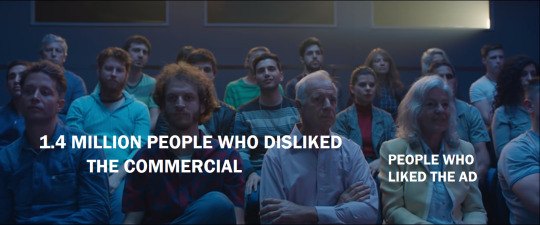
Alienation is another central reason for the commercial’s lack of success and criticism. Alienation is key to the success of capitalism and the mass media plays a crucial role in its success as “they provide momentary gratifications for the alienated spirit, they distract the alienated individual from his or her misery (and from consciousness of the objective facts of his or her situation), and, with the institution of advertising, they stimulate desire, leading people to work harder and harder.” (Berger, pp. 51). Commercials and media are meant to distract people from their alienation and provide them with a moment of relief from their work and “homeless” state as Marx puts it, but the Gillette commercial fails to accomplish this task and instead of uplifting the audience’s spirits, they are reminded of their own flaws. The Gillette ad does not play off of alienation to benefit the sale of its product by displaying a forgettable, but likable commercial, it instead accuses men of not being good enough or active enough socially or in their day to day lives in regard to inequality and sexism in light of the MeToo movement. This reminder of the outside world when they are meant to mindlessly consume and ignore their misery turns off the consumer and makes them turn against those reminding them of their alienation. Gillette had the opportunity to display a light-hearted commercial that utilized alienation for their benefit, but because of the disregard of this opportunity, they created a largely unsupported and unsuccessful commercial.
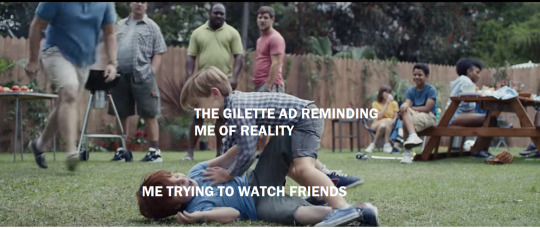
The Gillette commercial was also unsuccessful due to its poor use of public pedagogy. Public pedagogy—the education of people outside school—and particularly media culture “has become a substantive, if not primary, educational force in regulating the meanings, values, and tastes that set the norms and conventions that offer up and legitimate particular subject positions—what it means to claim an identity as male, female, white, black, citizen, or non-citizen as well as to define the meaning of childhood, the national past, beauty, truth and social agency.” (Giroux, pp. 254). Disney has been so successful in terms of public pedagogy due to its reputation and marketing of innocence and childhood and has managed to create consumers and instill values and beliefs into its audiences due to its subtlety and beloved characters and stories (Giroux, pp. 257). Gillette, however, tries to educate its audiences without this reputation and with only the reputation of being for men. Gillette’s attempt to instill values and beliefs through its commercial was largely laughed at and criticized because of its lack of subtlety and lack of product in the specific commercial. If Gillette had created a commercial that had a deliberate product being sold and a subtler placement of its values and attempt at education, the commercial would have been more successful and more well received.
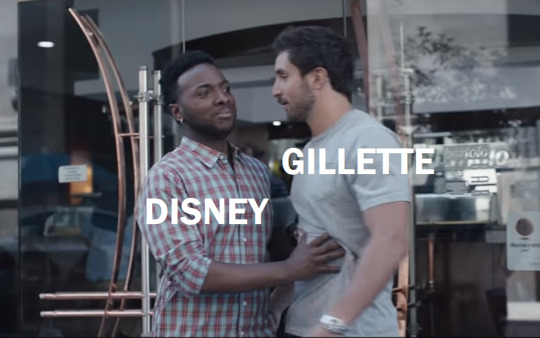
The recent Gillette commercial released because of recent sexist findings in the entertainment industry was not well received and largely criticized because of ideology, alienation, and public pedagogy. Gillette had good intentions with the release of this advertisement, but it lacked core values and a likable and trusted reputation. It also brought viewers back to reality when they were trying to unwind after a hard day’s work. Commercials can hold great power as they carry with them the ability to manipulate the masses regardless of how impactful or dismissive an advertisement may seem. However, this power can be taken away all too quickly if key concepts of media and culture and applied incorrectly.
Work Cited
Berger, Arthur Asa. “Alienation” and “The Consumer Society.” In Media Analysis Techniques.
Giroux, Henry. “Public Pedagogy and Rodent Politics: Cultural Studies and the Challenge of Disney.” Arizona Journal of Hispanic Cultural Studies, vol. 1, no. 2. 1999. Pp 253-266.
Williams, Raymond. “Ideology.” In Marxism and Literature. New York: Oxford University Press, 1977. Pp. 55-71.
1 note
·
View note
Text
Week 8 – Industrial Design
Post a combination of at least 10 drawings, photos and/or notes on design observations you see in the world around you at mid-term.
The first design I’ll be talking about is dog leashes. I’m the dog walker in my family and I was curious about how old the design concept is. Surprisingly leashes have been around since egyptian times. Although they are obviously not made with the same material that we use now and were retractable, the purpose is the same.

One interesting thing about microwaves is that they weren’t planning for it. The technology for it was thought of before the design. One of the engineers working with different wavelengths to develop something different ended up testing with food. That’s how the microwave concept came to be and was released commercially in 1947.

The first iphone, which the phone brand I currently have, was released in 2007 but before that in 1876 Alexander Graham Bell was the first to get a patent on the concept of the phone. Although the design of phones now are completely different and have gone through several different design concepts, the purpose remains similar. Phones main purpose isn’t just calls anymore, it allows for whole different type of communication and entertainment.

It’s obvious that things like purses have existed for a very long time. Although before they were really seen as accessories rather just a simple pouch made of whatever available material to have on the go.

Things that have a similar purpose to toothbrushes have been around for centuries. Although very early on they were simply twigs. They didn’t begin to have objects with bristles until the 1400s in China. Interestingly enough they used hog hairs for the bristles. The more modern type of toothbrush wasn’t made until 1938 and began to be mainly made out of plastic and nylon bristles.

There are so many different styles and size of speakers out there. The best thing about them is how easy it is to transport anywhere in comparison to old type music devices like radios and big stereos.

I’ve been cooking more lately and I have come to appreciate the seasoning organizer that my mom has at home. This just allows for easier access and less crowding in the cabinets.

During midterm week I unfortunately had to travel to Mexico for a funeral. One thing I noticed was how different there washing machines are. They’re shaped like big barrel. There obviously washing machines like the ones in the United states over there. But so many people owned the colorful barrel looking machines. I found out that they’re just cheaper to make that way and are better for the type of plumbing system that they have over there. The big difference in how they work in that they dont wring out the water as much, you got to do that by hand.

The first ball point pen was made in 1888 which is a lot earlier than I would have ever imagined. Before that they were using quil pens, steel point pens, fountain pens and reed pens. Although it wasn’t until the 1930s when a more successful version of the ballpoint pen came out.

Befor the modern printer came to be it was mainly just a lot of different types of pressing techniques to transer the letters or designs required. In the 1970s the laser printer came to be. Which allowed for equally as quick but more hands free method for printing.

“Alexander Graham Bell.” History , www.google.com/amp/s/www.history.com/.amp/topics/inventions/alexander-graham-bell.
Bellis, Mary. “Where Did the Computer Printer Come From?” ThoughtCo, www.thoughtco.com/history-of-computer-printers-4071175.
“Facts and History of Microwave.” History of Microwave - Invention of Microwave Oven, www.historyofmicrowave.com/.
“The History of Pens: The Journal Shop.” The Journal Shop Store, 20 June 2018, www.thejournalshop.com/thejournal/history-of-pens/.
Howard, Frank. “Horses Uses in the Roman Empire.” Pets on Mom.com, 19 Nov. 2020, animals.mom.com/horses-uses-in-the-roman-empire-12566937.html.
“Who Invented the Toothbrush and When Was It Invented?” The Library of Congress, www.loc.gov/everyday-mysteries/item/who-invented-the-toothbrush-and-when-was-it-invented/.
0 notes
Link
In response to a video on the newearth channel concerning flat earth the psy-op debate.
The original video is here: https://youtu.be/5cZH4LUHRec
All children naturally develop a flat earth conception. And with flat earth I mean, a flat realm. That is nature. Nature is always right. Natural understanding is different from scientific mechanical knowledge. Do you know how to digest food? Do you need the right certain thoughts to make it happen? Science may think it understands digestion, but your body actually does it. Nature is not a machine. It requires a different understanding to connect with it. We do not need a model of digestion to digest or to digest better. That is not how nature works. In the past, people could see which plants were poisonous and which not. They did not have to perform a test for each plant, have many casulties etc, and compile a corpus of knowledge to pass on. That is an absurd form of life that only came about when people lost their natural knowledge. Now we are blind and deaf, and our only way to understand is to measure with machines and reason mechanically. But let me tell you, this is absolutely not the way to understand Earth. The true nature of our life, earth, the heavenly bodies, is behond the grasp of mechanical thinking and Measuring. The problem starts already with light. What is it? Nobody knows. The whole physical sciences have zero understanding about anything. Our technological progress is not built on the understanding of nature, just the oppsite, on understanding robots and mechanics. Technology is developed through trial and error. It is the progress of how to manipulate substances, not how to understand them. We can understand something wrong, yet achieve success in an experiment. You think there is only a problem with the historical sciences? The whole basis of science is a problem. It is easier to focus on one thing, like history, but that is a reductionistic approach of science which leads away from natural understanding where everything is a whole. There will not come experiments to show us the true shape of the earth. It does not exist on that level. I understand it to be a flower, floating on the cosmic sea. But this cannot be measured. Can you measure your love for someone? The essence of life lies outside mechanical thinking. Since mechanical thinking is a fairly recent developmznt, look around you how it is destroying life quickly, we can be sure that the mechanical spherical model of earth and heavenly bodies is recent as well. The vedas talk about planes of existence, which you can deduce yourself that they exist. It was common knowledge not so long ago that there were multiple realms in which you existed as well. In your dreams, real dreams are rare these days of course, you can sometimes visit these other levels. They contain parts of you that know more and have memories that go far back. It is through such dreams that I learnd without any youtube flat earth knowledge or involvement, that the whole spherical model is a lie. This whole video is a big disappointment and on a very low spiritual level. It is even badly researched in that respect. If we could see the curve from a plane, there would exist no debate concerning the curve. I and countless others have never seen a curve from a plane. According to calculations, you should not even be able to see it from a commercial plane. To focus on the physical level of the debate is already a mistake, but then to take this worst of examples, just shows you cannot deal with this topic in a proper manner. Hours are spent to dwell on rocks and stones on this channel, but to the nature of the earth itself, 10 minutes should be enough? Is that an honest contribution? And then, you burden the so-called flat earthers, a creation by the evil ones, that they have to come up with new experiments to form a scientific sound new model of the earth. Aha, so it is up to others to figure it out? Is that it? You have nothing to do with this? So much for the newEarth Channel. There are no flat earthers. These are artificial groups created by the system, and you play the chess game along with it. By your logic, you should provide us with a complete alternative history with all the necessary proof. This is corrupt thinking. We can question a model without having an alternative. Too much knowledge has been lost on all levels. We start by questioning the status quo the system gives us. It is not because we know something is a lie, that we know what is true. The whole flat earth debate is meaningless as it is guided by the rules of the system. It is poison that feeds the evil forces. It is not a matter of intellect, the nature of earth. It is a matter of the heart in the first place. Gravity, ball earth, empty black space, etc. are all intellectual inventions. They remove you from your own inner knowledge, it ridiculises your own intuition which you started developing as a child. Earth is not an object, that is an intellectual invention. Earth has been made into an object, it has been dethroned. Earth is the condition where objects can manifest. Past people never objectified earth, she was always a goddess, a mystery, a living realm. To not understand that a spherical earth that floats in empty space amidst countless other spheres is a vision that destroys a spiritual meaningful life, that this is the central vision of the whole quacedemia, that this “fact” is a very recent fabrication, this shows the gap there must exist between heart and intellect, this is the total lack of spirituality. It is the product of a mechanical mind, not your own. The flat earth topic has been steered into a corrupt intellectual direction that will lead nowhere. And you are joining it as they want it. Because the movement is corrupt, a psy-op, you think it suffices to deal with in such a superficial manner. Let me tell you, the whole alternative history-science-religion, the whole new age movement, all of it is a psy-op. All of it. It does not mean that the ideas discussed in them are all lies, it means that they are explained in such a way that they will cause no harm to the system the parasites have created. Thery are just there to create the illusion of freedom. But you can think whatever you want, it will not harm the system in any way. It will gladly accept another zillions hours of newearth videos showing alternate views of the past. As long as the true heart is not involved, your thinking remains restricted and bound by the rules they have set in all of us. Flat earth is yet another movement they initiated that seemingly breaks the rules of the system, but that actually makes them stronger. We do not arrive at the truth of things through discussions, experiments, watching videos and talking. Truth comes from within. Nothing is needed from the external world, no therapist, no drugs, no music. Contact with the soul can only happen if time is given, great care and patience. Any other way will lead to misleading experiences. The truthmovement is just entertainment, a drug against boredom, a mass movement. An abstract intellectual enterprise that has no connection with reality. Truth is not information, it is insight through personal effort. It cannot be spread, handed over to others. We can be informed that our history has been rewritten, but that gives us no insight to what that means. But I can tell you that nothing is changing, that the system is not in danger, because it is itself handing you out all this fascinating information. As long as the gate of wisdom remains closed, you have no power to change anything. Tolkien has perhaps written the most powerful tale of where truth is to be found: in the heart of darkness. We are the small hobbits, no magical powers, all odss against us. The ring is the system. It can never be used to do good. All our technology is destructive. All thinking derrived from this technology is equally destructive. To destroy this ring, this system, we must penetrate into the heart of the place where it was forged. We must confront our biggest fears. We must go where we least want to go of all. We must destroy the system within us. But we do not seem to have the time to do all this. We are running around but achieving little. Each day we seem to have less time. The system grows bigger as it swallows more and more of our time. That is how it controls our world. It is a time thief. History was changed to steal time from us and to add it to the system. Only if we are able to take back our time, will we in fact have the time to free ourselves from the slavery of the system. But to understand this, we must forget what we have been taught about time. Time is the essence of life. Michael Ende has written a beautiful story about this in Momo. It is a book with vital insights about the system, well hidden in a so called childrens story. Good stories are like dreams, they can help you to achieve insights because they are more than information, they are also full of symbols and archetypes. Like a plant cannot grow without sufficient water, we cannot live and develop without sufficient time. We grow old quickly and die before we can even understand why we were born at all. And then we are born again, and each time we possess less of our soul because the system eats it and uses this soul time to generate a false world with principles opposite to those of life. If you want to change anything, start by concentrating on retreiving your time. There is a good reason why swastikas have been demonised. The left turning swastika is the symbol of how to reverse the flow of time. It contains the dynamics to do this, to make time flow away from the system back to you. That is a direct threat to the system, so it had to be associated with evil. Think of the most horrible situations you suffer or suffered and reverse them clockwise. Drain them of their time essence, and you will notice that they will lose their power over you. They will eventually become unreal, like a film. That is how the past can be undone. You cannot rewind anything, that is mechanical thinking btw, but you can retreive the time essence through your memories which keeps these events alive. The other archetype you must focus on to achieve time reversal is the dragon, which symbolises all real original animals. The dragon is the magic body you need to help you activate the reversal dynamics. Btw, the ancient dragon culture also had to be destroyed, and the dragon turned into some evil reptile to be slain, and later even became associated with dinosaurs (which only exist in the astral planes). The dragon spirits are the arch enemy of the systems agents, which could be called dragon snakes. They can manifest in many forms in nightmares, or in astral visions. Appear as angels, aliens, etc. They are what the orc is to the elf. Dragon spirits are repelled from our world. It will take effort to connect with, I should say, your dragon. A name is important. Create a power place, like a small altar, make a drawing from the unconscious. Draw a left turning swastika. Draw a black ring to represent the system. Know that the soul is twofold, with the lower manifested as a snake and the higher with the bird. These need to be merged together. That is the winged snake. Redeem the snake, the fallen part of the soul. That is how this system will be destroyed.
1 note
·
View note
Text
25 Best Movies on Hulu Right Now (September 2019) | ScreenRant
Hulu has a lot of great movies - here are the 25 best films on the streaming service. In an age of options, less feels like more. While Netflix has an ever-expanding library, Hulu offers a more focused collection of great movies. Because volume isn’t the objective, Hulu succeeds in curating a batch of excellent films.
There are the iconic classics like The Matrix and Seven, the arthouse darlings like Sorry to Bother You and Let the Right One In, and the pure entertainment gems like The Fifth Element and Shrek. Hulu keeps it simple, and offers something for everybody. Here are the 25 best movies that you can watch on Hulu right now.
Related: The 25 Best Films on Netflix Right Now
Before we start, first a disclaimer. modern streaming libraries are like carousels, always moving and always changing. The films in this list are available on Hulu at the time of writing. We’ll be updating this top 25 list frequently, so keep an eye out for Hulu’s latest and greatest offerings. Also, the list isn't ranked from worst to best, so a lower number is not meant to denote higher quality. It's just a list of 25 great movies.
Last updated: September 5, 2019
25 Detroit
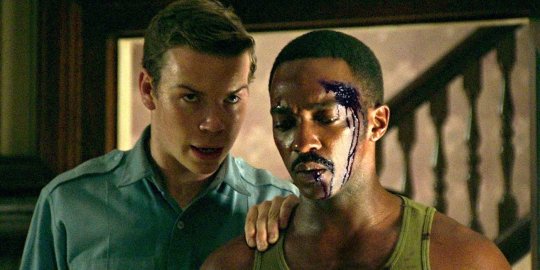
While it slipped through awards season without much hype, Detroit remains one of 2017’s best films. Rotten Tomatoes awarded it an 84% for its “gut-wrenching dramatization of a tragic chapter” in American history. Director Kathryn Bigelow tackles the 1967 incident in Motor City with aplomb, deftly guiding a sprawling cast (led by John Boyega and Will Poulter) through a maze of tension, bigotry, and survival. Detroit streams exclusively on Hulu.
24 The Fifth Element

One of the most unique sci-fi films of its decade, director Luc Besson's 1997 hit The Fifth Element served to launch the career of future Resident Evil franchise lead Milla Jovovich into the stratosphere, and is now on Hulu. Bruce Willis stars as Korben Dallas, a 23rd century cab driver who ends up unwillingly thrust into a quest to save the Earth when Leeloo (Jovovich) jumps off into a building into his flying vehicle. The two are opposed by Jean-Baptiste Emmanuel Zorg (Gary Oldman), a brash villain working on behalf of a great cosmic evil.
23 Seven

One of the most respected crime thrillers of the 1990s, Seven has style to spare, and was one of the films to first establish David Fincher as a director be reckoned with. Seven stars Brad Pitt as brash young detective David Mills, who partners up with soon to retire detective William Somerset (Morgan Freeman) in order to try and catch a serial killer who bases his murders on the seven deadly sins. Hauling in over $300 million at the box office on a $33 million budget, Seven was both a critical and commercial smash, and deserves to be revisited on Hulu.
Read More: 15 Awesome Facts You Didn't Know About Seven
22 The Matrix
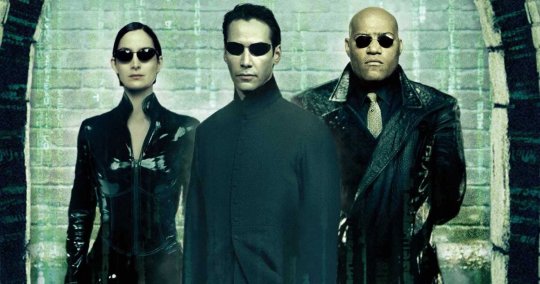
One of the biggest pop culture phenomenons of its time, 1999's The Matrix put sibling directors The Wachowskis on the map. The Matrix's quite brilliant premise is that the world and everyone in it is in fact a computer simulation powered by the very humans that dwell there, after a catastrophic war between mankind and machines. One day, Thomas Anderson aka Neo (Keanu Reeves), a mild-mannered computer programmer by day and hacker by night, is woken up to the sad reality of his situation by Morpheus (Laurence Fishburne) and Trinity (Carrie-Anne Moss), leaders of a human resistance effort seeking to expose The Matrix to the public. Sequels The Matrix Reloaded and The Matrix Revolutions are also available on Hulu.
21 Basic Instinct

While 1992's Basic Instinct is most remembered for a particularly scandalous scene involving Sharon Stone, the movie as a whole is quite the enthralling neo-noir suspense thriller. Directed by Paul Verhoeven, Basic Instinct stars Michael Douglas as detective Nick Curran, who makes the mistake of becoming romantically involved with murder suspect Catherine Tramell (Stone). Well, depending on one's definition of romance. One of the biggest hits of the 1990s, Basic Instinct made over $350 million, and is a Hulu pick definitely aimed at adults.
20 Lethal Weapon

Directed by 1980s mainstay Richard Donner, 1987's Lethal Weapon still stands as one of the quintessential examples of how to do a "buddy cop" action movie right. Mel Gibson stars as Martin Riggs, a suicidal sergeant with a short fuse and nothing to lose. Riggs gets partnered up with by the book lawman Roger Murtaugh (Danny Glover), leading to a slowly blossoming friendship, and one of film's most beloved duos. Lethal Weapon would spawn three successful sequels, and a TV reboot that aired on FOX. All are currently available on Hulu too.
Read More: Where Are They Now? The Cast Of Lethal Weapon
19 An American Werewolf in London

There are many iconic movies about vampires, ghosts, witches, and demons, but unfortunately, the werewolf tends to come up short in that department, starring in more stinkers than hits. Arguably the best werewolf movie of all time is 1981's An American Werewolf in London, directed by John Landis, and now on Hulu. Boasting amazing practical creature effects that hold up today, the film tells the story of David Kessler (David Naughton), an American backpacking in Europe that ends up surviving a werewolf attack that kills his best friend. Unfortunately, it's not too long before David realizes he's now cursed to kill during the full moon.
18 Ocean's Eleven

While director Steven Soderbergh might be better known for his award-worthy dramas, sometimes he stops being quite so serious, and creates the laid back chill of 2001's Ocean's Eleven. A critical and commercial ($450 million worldwide) hit, Ocean's Eleven manages to be both a thrilling heist caper and an amusing bit of ensemble fun, perfect for Hulu subscribers. Said ensemble boasts some huge names, including George Clooney, Brad Pitt, Julia Roberts, Matt Damon, Don Cheadle, and Bernie Mac.
17 Hellraiser

Any dedicated horror fan has surely had their soul torn apart multiple times by Hellraiser's Pinhead (Doug Bradley) by this point. Director Clive Barker (adapting his own novella) crafted one of the most enduring tales of terror to come out of the 1980s, spawning one of the longest-running horror franchises out there as well. Hellraiser may only have a 68% rating on Rotten Tomatoes, but it's a certified classic of the genre, and needs to be watched by anyone who enjoys a good fright flick. Direct sequel Hellbound: Hellraiser II is also part of Hulu's roster.
Read More: The Real Life Inspirations Behind 11 Horror Movie Icons
16 Frank

To some, Michael Fassbender is a young Magneto. To others, he’s a two-time Academy Award nominee. To a select few, he’s the gonzo pop musician and eponymous hero in Frank, the offbeat artist who became more famous for his oversized paper-mâché mask than his music. Directed by Lenny Abrahamson (Room), Frank earned a 92% Rotten Tomatoes score and remains a cult classic to adventurous Hulu viewers looking for a changeup in their visual diet.
15 Annihilation

One of Screen Rant's favorite movies of 2018, Annihilation is a visionary sci-fi film written and directed by Alex Garland, who previously made his directing debut with the equally arresting Ex Machina. Natalie Portman stars as Lena, one of the only survivors of an expedition into a realm called "The Shimmer," which serves as home to places and creatures beyond anything known to the natural world. Sporting an 89% RT score, Annihilation just arrived on Hulu, and also stars Jennifer Jason Leigh, Gina Rodriguez, Tessa Thompson, and Oscar Isaac.
14 Training Day
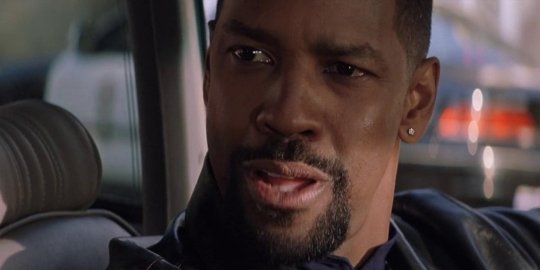
Directed by Antoine Fuqua, Training Day features Denzel Washington in arguably his greatest role, alongside an equally game performance by Ethan Hawke. Washingston stars as Alonzo Harris, a highly decorated but also highly corrupt narcotics officer, tasked with showing new recruit Jake Hoyt (Hawke) the ropes. Alonzo is a villain through and through, but damn is he fun to watch at work. Surprisingly, Training Day only holds a 72% on RT, despite earning Washington an Oscar and Hawke an Oscar nomination. Regardless of the lower rating, Training Day is still one of the best films on Hulu.
Read More: Ethan Hawke is (Sort Of) Right About Superhero Movies
13 Spaceballs

Made back in the days when director Mel Brooks could seemingly do no wrong, Spaceballs is a hilarious parody of the original Star Wars trilogy. While it wasn't quite a critical hit, Spaceballs has earned itself a gigantic cult following in the decades since its release, and features terrific comedic performances from greats like Bill Pullman, John Candy, Rick Moranis, Joan Rivers, and even Brooks himself as the wise sage called Yogurt. Stream it on Hulu and get ready to laugh.
12 A Quiet Place

While John Krasinski might always be best known for playing Jim on iconic sitcom The Office, 2018's acclaimed sci-fi/horror film A Quiet Place demonstrated that he has just as much talent behind the camera. Directed, co-written by, and starring Krasinski, A Quiet Place centers on a family living in the aftermath of an apocalyptic alien invasion. The invading creatures are deadly, and hunt by sound, meaning that the Abbott clan has to spend most of their life in silence. Unfortunately, things eventually go wrong, and the monsters come calling. Krasinkski's real-life wife Emily Blunt co-stars in this prime Hulu pick.
11 Unbreakable

While 2019's theatrical arrival of director M. Night Shyamalan's latest film Glass didn't exactly set the world on fire, that doesn't diminish the greatness of its predecessors, the first being 2000's Unbreakable, recently added to Hulu. After surviving a deadly train crash without a scratch, mild-mannered security guard and family man David Dunn (Bruce Willis) comes to discover that he possesses powers beyond normal men, and that he's destined for greatness as a superhero. Guiding him down this path is Elijah Price (Samuel L. Jackson), a mysterious man with secrets of his own.
Read More: M. Night Shyamalan's Films Ranked From Absolute Worst To Best (Including Glass)
10 Punch-Drunk Love

The fourth feature to be directed by perennial critical darling Paul Thomas Anderson, 2002's Punch-Drunk Love offered a showcase for comedy icon Adam Sandler's then-unknown dramatic chops as Barry Egan, a desperately lonely man with severe rage issues. Sadly, said chops have only been glimpsed a few times since, with Sandler mostly content to stick to his usual wheelhouse of slapstick comedies like Grown Ups. Still fans of Sandler the actor will always have this critically acclaimed film to remember him by, and stream on Hulu.
9 Airplane

Continually considered one of the funniest films in history, 1980 spoof comedy Airplane throws joke after joke at the audience with reckless abandon, and while all of them don't necessarily hit for everyone, most of them likely will. Granted, Airplane does contain some material likely to be viewed as a bit problematic by current standards, but when seen through the lens of when it was made, it's clear these jokes weren't intended to be malicious. Airplane might be best known for taking Leslie Nielsen, then primarily a dramatic actor, and turning him into a comedic force to be reckoned with. Anyone who hasn't experienced Airplane needs to take this flight while it's on Hulu.
8 Shutter Island

Directed by Martin Scorsese and starring his modern muse Leonardo DiCaprio, 2010's Shutter Island centers on U.S. Marshal Teddy Daniels, who's sent to investigate a mysterious disappearance at a mental hospital on the titular island. Unfortunately for Teddy, nothing is what it seems, and the mystery threatens to swallow him whole. The star-studded cast also includes Mark Ruffalo, Ben Kingsley, Max von Sydow, and Michelle Williams. Those looking for a thriller designed to keep them guessing should definitely stream Shutter Island on Hulu.
Read More: 10 Amazing Martin Scorsese Movies Everyone Forgets About
7 Shrek
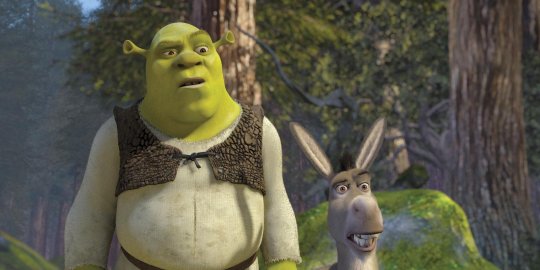
The film that put Dreamworks Animation on the map, 2001's Shrek stars Mike Myers as the titular ogre, a creature gruff on the outside but caring on the inside. Despite not wanting to do anything but hang out in his swamp, Shrek is compelled to go on a quest to rescue Princess Fiona (Cameron Diaz) by the villainous Lord Farquad (John Lithgow). By his side is Donkey (Eddie Murphy), a fast-talking animal who can't help annoying Shrek with his constant chatter. Shrek spawned a franchise of three sequels and multiple specials, and is worth checking out on Hulu.
6 Rosemary's Baby

Although director Roman Polanski is quite rightfully disgraced nowadays for being a convicted rapist, but that doesn't mean his classic films are suddenly any less great. One of the best is 1968's Rosemary's Baby, a deservedly revered entry into the horror canon. Mia Farrow stars as the titular character, a young woman who sees her life get more and more unraveled after she and her husband move into a mysterious New York City apartment building. Before long, she begins to suspect that every single person in her orbit might be involved in a demonic conspiracy. Those who haven't seen it owe it to themselves to meet Rosemary's Baby on Hulu.
5 Vice
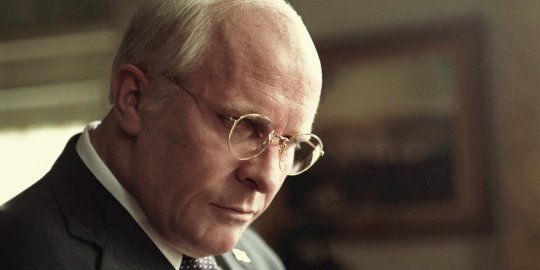
A biopic about former U.S. vice president Dick Cheney was always going to be a controversial, divisive prospect, especially one directed by Adam McKay with a sharp satirical edge. In the end, 2018's Vice ended up earning mostly praise from critics, and multiple Oscar nominations, including one for Christian Bale's eerily accurate performance as Cheney. Bale famously put on lots of weight for the role, and is almost unrecognizable at a glance. Vice's all-star cast also includes Amy Adams, Steve Carell, Sam Rockwell, and more. Vice is worth a stream on Hulu, especially during these current politically-charged times.
Read More: Christian Bale’s 10 Greatest Roles, Ranked
4 Star Trek II: The Wrath of Khan

The Star Trek multimedia franchise has so far produced 13 feature films, but arguably the most iconic of those came early on, with 1982's Star Trek II: The Wrath of Khan, now on Hulu. For better or worse, The Wrath of Khan changed gears from the metaphysical, exploratory adventure that was Star Trek: The Motion Picture, and did its best to turn Star Trek into more of a space action vehicle. Thankfully, it succeeded with most, and William Shatner's Captain Kirk yelling KHAN! at Ricardo Montalban's titular villain has become the stuff of legend.
3 Sorry to Bother You
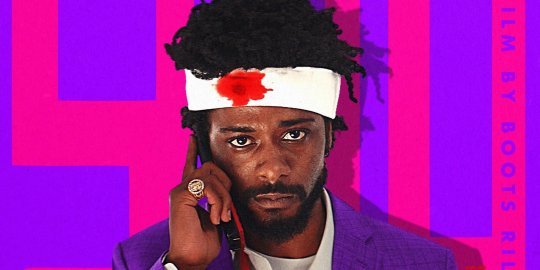
One of the most uniquely creative movies of 2018, director Boots Riley's debut is a thought-provoking look at American race relations, framed through a dystopian comedic lens. Sorry to Bother You stars Lakeith Stanfield as Cassius "Cash" Green, who gets a job as a telemarketer, only to discover that putting on his "white voice" is what gets the money rolling in. Sorry to Bother You is a film not really suited to being summed up in a paragraph, but its 93% Rotten Tomatoes score kind of speaks for itself. Check it out on Hulu.
2 Heathers

A darker than dark comedy, Heathers was written by Daniel Waters and directed by Michael Lehmann, and sports a huge cult following, which is sure to only get bigger via Hulu. Winona Ryder stars as Veronica Sawyer, a high school student who runs afoul of former friends the Heathers, a trio of rich, popular girls that rule teen society with an iron fist. After being wronged by them, Veronica makes the mistake of teaming up with outcast bad boy J.D. (Christian Slater) in order to get revenge. Sadly, J.D.'s idea of revenge is straight up murdering his enemies.
1 Let the Right One In
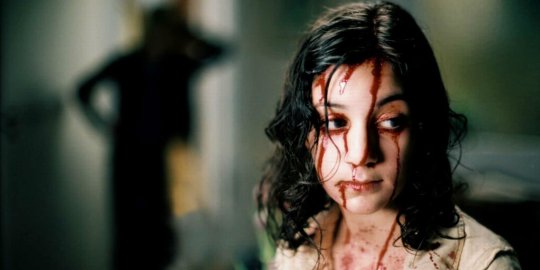
Released in a decade where vampire cinema was dominated by the sparkly Twilight, director Tomas Alfredson's Swedish hit Let the Right One In was exactly what the classic creature needed to remind audiences that despite their affliction, vampire movies don't have to suck. Lina Leandersson stars as Eli, an ageless vampire with the appearance of a child, and Kare Hedebrant plays Oskar, the bullied young boy she enters into an unexpectedly sweet relationship with. The film was later adapted stateside by Matt Reeves, with Chloe Grace Moretz in the Eli role. That version is sadly not available via Hulu.
Next: 10 Best Shows You Didn’t Know Were On Hulu
source https://screenrant.com/hulu-best-movies/
0 notes
Text
Chapter 3: Speech Distinctions
For my attempt at communication law, I will be utilizing a book titled “The Law of Journalism and Mass Communication” in order to complete chapter outlines.
Topic Overview:
The Constitution of the United States secures the rights to free speech and expression, but it is unclear how exactly this is measured and ruled on within a courtroom. A big issue regarding the First Amendment is national security. Oftentimes, new rulings and definitions come from moments when the government has attempted to limit what citizens can say or do. As a way to clearly state what should be protected and not protected, the Supreme Court of the United States has created multiple tests according to the cases they have addressed. These tests range from different definitions of free speech to the elements needed to warrant an exception to the First Amendment. In other words, these tests explain how far one can go with their words and actions before their rights are revoked and punishment is necessary. Because the First Amendment is vague in its language, concepts such as Hate Speech and Fighting Words have emerged to make it a bit more specific. However, even concepts which have emerged to make the Amendment more specific are consistently being redefined as time goes on and the world changes.
Defining key terms: Considering that this is an outline rather than a complete summarization of chapter three, I have strictly selected key terms I had not encountered prior to reading. These key terms include:
Chilling effect: The discouragement of a constitutional right, especially free speech, by any government practice that creates uncertainty about the proper exercise of that right.
Incorporation doctrine: The 14th Amendment concept that most of the Bill of Rights applies equally to the states.
Important cases:
Tinker v. Des Moines Independent Community School District (1969): This involved the First Amendment in relation to public schools in the United States of America. More specifically, the Supreme Court of the United States ruled in favor of the rights of the students attending these schools, stating that these students have the rights to freedom of speech and expression just as they do outside of school, and those rights should be protected.
Elonis v. United States (2015): Another ruling involving the First Amendment, this case surrounded proving the intent of a threat toward another over interstate lines (in this case specifically, social media was where the threat in question occurred). The Supreme Court of the United States ruled in favor of Elonis, who was convicted of threatening others via personally written rap music on his Facebook account. The Court stated that a threat online must involve intention to carry out the threat, and the lack of that element in this case allowed him his freedoms of speech and expression.
Relevant Doctrine:
Chapter one defines doctrine as “principle or theories of law that shape judicial decision making.”
Fighting words: Words not protected by the First Amendment because they cause immediate harm or illegal acts.
Under the Supreme Court’s fighting words doctrine, the First Amendment does not protect words what
1) are directed at an individual and
2) automatically inflict emotional harm or trigger violence
Incitement (Brandenburg Test): This test establishes that speech loses First Amendment protection when it is likely to prompt imminent violence.
The incitement test allows government constitutionally to prohibit speech that is
1) directed toward inciting immediate violence or illegal action and
2) likely to produce that action
The Brandenburg decision established that the government may punish criticism of government or advocacy of radical ideas only when speakers intend to incite illegal activity that is so imminent no other recourse would suffice to remove the threat.
True threats: Speech directed toward one or more specific individuals with the intent of causing listeners to fear for their safety.
Years ago, the Supreme Court defined a threat as an “utterance in a context of violence [that] can lose its significance as an appeal to reason and become part of an instrument of force.” As such, it is “not meant to be sheltered by the Constitution.” In Virginia v Black, the Court concluded that punishment of true threats is acceptable under the Constitution. The Court examined both speaker intent and a reasonable person’s objective response in determining that cross burnings were true threats because of their historic power to terrorize.
Media negligence: Negligence itself is defined generally as the failure to exercise reasonable or ordinary care.
To win a lawsuit for injury caused by media negligence, the plaintiff must prove breach of media’s duty of care because the content posed a
1) reasonable foreseeability of harm or
2) proximate [directly related] cause of the harm
Current Issues or Controversies:
Recently, a Snapchat video went viral as two University of Oklahoma students participated in “blackface,” racial slurs, and laughing together. The video received immediate backlash by those who were able to access the video, overall causing it to go beyond the immediate circle into the general social media world. With the video soon reaching both the sorority the women were a part of and the university itself, at least one of the women was expelled from the sorority and both left the university altogether (although they were not expelled from it).
I was reminded of this incident when I read the definition of “hate speech” within this chapter, which is defined as “a category of speech that includes name-calling and pointed criticism that demeans others on the basis of race, color, gender, ethnicity, religion, national origin, disability, intellect or the like.” Clearly, this video fell under several categories within this definition. As I read about the case Tinker v. Des Moines Independent Community School District (described above), I did wonder what the exceptions to free speech for students were while they were at school (even though that particular case was for K-12 public schools and did not mention universities). I now see that just as it is outside of public school grounds, I can add “hate speech” to the list of what is not acceptable for students to participate in while on campus. Although this is a university, I would suspect that it falls under very similar terms.
My Questions / Concerns:
1) The razor brand “Gillette” recently came out with a commercial implying that the era of toxic masculinity needs to come to an end, and that men should work toward being the best versions of themselves for the betterment of society. I personally read comments of Facebook under the ad, where several users expressed that they were hurt by the commercial and its hateful nod toward all men. Curious to read more of the other side, I read a few articles on conservative platforms (Fox News especially), where they felt that this was a form of hate speech due to its tendency to blanket all men under the same labels such as bullies, predators, and rapists. My question is, could this really be a form of hate speech, or at least a form that could be successful in court?
2) How challenging is it to prove that one performed “fighting words” in court? What are some examples of fighting words that a court would find valid for conviction?
3) How does free speech and expression rights in private schooling differ from that of public schooling? Is it really true that one’s rights are signed away simply because they are not under the State’s education? How challenging is it to win one’s rights back if one takes their case to court?
References:
Trager, Robert F., et al. The Law of Journalism and Mass Communication. CQ Press, 2018.
Thanks for coming to my Ted Talk!

0 notes
Text
Paper代写:American multicultural music education
本篇paper代写- American multicultural music education讨论了美国多元文化的音乐教育。美国是一个拥有二百七十多个民族的移民国家,种族歧视,移民问题,公民权运动等的影响触动了整个教育的发展,进而影响到多元文化音乐教育的进程。从美国的多元文化音乐教育发展进程中可以看出,从开始的同化融合到今天的多元文化音乐教育,教育领域几乎数十年就出一次深刻的思想变革,这种变革是在目前音乐教育理念的基础上,进行不断的总结和反思,从而形成了新的更适应社会发展的音乐教育理念。本篇paper代写由51due代写平台整理,供大家参考阅读。
Music is not only imbued with the cultural personality of the nation, but also a reaction to the cultural life of the nation. The inheritance of music culture of a country and a nation cannot be separated from music education. Music education in different times, countries and nations has formed many patterns and characteristics due to the time features and regional differences of music culture. In these different music culture, each has its own characteristics and equal value, and multicultural music education connotation of equality is advocated all national music, and all kinds of music culture coexist, so the multicultural music education into today's international music education development general trend, the development of multicultural music education, will inevitably make the different music culture, race, a show.
America is a country with more than two hundred and seventy ethnic immigrants, the immigrants create and prosperity in the United States, and in the United States brought the innovation and continuous development of science and technology at the same time, they also pressing for higher social status and power in search of equality, racial discrimination, immigration, the influence of the civil rights movement touches the development of the whole education, which affect the multicultural music education in the process. Under this social background, the view of multi-culture follows the trend and develops timely. And China in the han nationality as the main body of the multi-ethnic country of 56 ethnic groups, unlike the us, China is not brought to national internal contradictions, but China's music education exists and the eurocentric approach with the center of the ethnic problems, since the beginning of the 20th century, to haunt the eurocentric China's music education, in the school music course, the characteristics of minority music curriculum is quite lack, with the national multicultural music education has not been very good development.
Throughout the United States in the multicultural music education in the process of development, you can see that from the beginning of assimilation into today's multicultural music education, the education sector decades is almost out of a deep ideological change, this change is in the current music education idea, on the basis of constant summary and reflection, thus formed a new, more adapt to the social development of music education philosophy. The end of the 19th century early 20th century, American music education also has the experience, the eurocentric education idea and the curriculum is based on western music as the main body of the system, but after the change of The Times and reflect on, the United States realized its own population diversity and the characteristics of cultural diversity, it is because has such rich and colorful, make students in the learning process, can put the national culture in various factors compared with other factors of foreign culture, so as to make the students feel diverse cultural heritage is the human common spiritual wealth. In Chinese modern history of music education, music of kua culture education exploration is not very successful, the opium war, the westernization movement representative put forward the "traditional Chinese values aided with modern western management school for the body," argues that to promote the development of Chinese culture in the form of assimilation, later again the idea of "wholesale westernization", so blindly copying, is actually to the denial of traditional culture, from the traditional to the modern cultural education has not been really implemented.
In today's China, many scholars have realized that "multicultural music education" is an inevitable trend of The Times, but we often put it in the position of attachment or supplement, just a routine procedure or step, and it is not the practice standard that we should really implement. For example, in our curriculum setting, we can see that the absolute proportion is based on the western music system, such as music theory audition and ear training, four-part harmony writing, orchestration, and form analysis, etc., while ethnic music or world ethnic music curriculum setting is very few. In today's more global integration of the world, at the same time of feeling the pressure from global competitiveness, classroom teaching and curriculum have tended to cater to the market demand of commercial development, practicability and value of market business has become a measure of music education is the standard of success, the students' utilitarian heart also more and more strong, music education is the purpose of the real? Is it just to complete the training and equip the students with the ability to survive, or is it to educate for the increasingly commercialized music? If so, what would be the point of a multicultural music education? A teacher should be the most important factor in the implementation of the whole educational process. The level of teaching quality he has and the teaching results he produces will affect the inheritance and development of the whole national culture. Our country's at present most of the music teachers in colleges and universities lack is the ability, a professor at the world music culture, their music in professional college or in art colleges, accept is the traditional teaching model of "western-centric", there is no denying the fact that today's music teachers and music education itself is suffering from the dual crisis of the epistemology and methodology.
Finally, music teachers are the key to implementing multicultural music education. Although the multicultural music education in the United States has a history of nearly one hundred years and is at the forefront of the multicultural music education in the world, it also has an insufficient aspect. For example, the introduction of music in the world is very limited in the curriculum setting. Many ethnic minorities and the music culture in underdeveloped areas are not included in the curriculum. Although some teachers have some multicultural awareness, they are limited by traditional concepts and do not have a thorough understanding and understanding of different cultures. Therefore, they cannot undertake the task of multicultural music education. Therefore, teachers are the most important resource for the implementation of multicultural music education, which cannot be realized without qualified teachers. In the process of the development of multicultural music education, the United States has always attached great importance to the cultivation and training of music teachers. Multicultural music education cannot be carried out in a country without independent music teachers. In view of the current music education in China, teachers with multicultural teaching ability need to be cultivated. , music courses about world nationalities are added to the undergraduate and graduate professional courses of musicology in institutions of higher learning. In history class, can be installed an introduction to the national music, national music appreciation in the world, the world's ethnic music courses, also can be set up according to the regional or national "Asian music", "Latin American music", "African music", "Japan's music", "American music", "the Russian music" course. In terms of basic music, representative melodies from music of all nationalities in the world can be selected and compiled into the teaching materials for solfeggio and ear training, and representative scales of music of all nationalities in the world can be introduced in music theory and solfeggio and ear training classes, which has positive significance for cultivating students' multi-stress sense. In terms of vocal music, instrumental music, choral conductor and other performance courses, we can compile representative folk songs, music, songs and dances of various ethnic groups in the world into teaching materials. In the art practice class, students rehearse and perform music dance programs of all ethnic groups in the world, so that they can experience the connotation of music culture of all ethnic groups more profoundly. In the educational practice, students are allowed to teach the music of the world ethnic group in the music class of middle school, and interns can more firmly grasp the music knowledge of the world ethnic group in the teaching practice. Qualified schools can choose to send teachers abroad for further study, or invite foreign experts to give lectures in China, in order to "go out, please come in" approach to training multicultural music education teachers.
Only by respecting the unique nature of differences among places, regions and countries can we enrich life in the 21st century with a truly global understanding of music culture. To understand a music, we must first understand a culture, understand its background and cultural roots, so as to make a better and objective evaluation. In this way, we can change the backward phenomenon of international music education, attach importance to and strengthen the international communication, so that students can acquire more rational knowledge and humanistic knowledge while learning music, and lay a foundation for the development of music education in China.
要想成绩好,英国论文得写好,51due代写平台为你提供英国留学资讯,专业辅导,还为你提供专业英国essay代写,paper代写,report代写,需要找论文代写的话快来联系我们51due工作客服QQ:800020041或者Wechat:Abby0900吧。
0 notes
Text
Research for Imagine
The track that I have decided to use for my music video is Imagine by John Lennon. The idea came to me when I was eating dinner with my family. As my family and I were eating our food we heard of the awful event that a shooting had been taken place in New York, killing several people. As the radio present was giving the details of the event, “Imagine” started playing in the background. In an odd way, the song was clearly trying to tell us, the listeners that we can all live in harmony.
The Creator:
Imagine was created by John Lennon. John Winston Lennon, was born on the 9th of October 1940 in Liverpool. He is best known for not only a member of the most successful band of all time known as the Beatles, but he is also known for being the flag bearer for peace.
In 1960, the Beatles were formed and would be sat on a path of domination around the world for the next ten years. The Beatles would get 17 songs in the number one slot in the UK charts. The Beatles would breakup in the year of 1970 when both Paul McCartney & Lennon left the group. With that being said during he’s time with the Beatles, Lennon won countless awards and number one slots on several charts with the Beatles, John was also in he’s time was given an MBE.
After several solo albums, in 1971 John Lennon would publish the album Imagine which would feature the self-titled Imagine; Imagine is regarded as one of Lennon’s most influential & popular songs. In the same year as releasing Imagine, John Lennon’s criticism of the Vietnam war nearly had him deported from the United States of America by the Nixon Administration.
On the 8th of December 1980, John was shot four times in the back by lone gunman Mark Chapman.
The Song:
Imagine (Both the album and song), was co-produced by both John Lennon, Yoko Ono and Phil Spector. It was realised under Apple Records. John and Yoko were at the time of producing married and would continue to be until Lennon’s passing.
The recording of the song began at John’s home studio in Tittenhurst park, they began work in May 1971. The overdubs took place at the Planet Rock in New York City in July. Once Imagine was released as a single in the USA, the song reached the number three spot on the Billboard Hot 100 and the LP reached number one back home in the UK in the month of November.
The song would become the most commercially successful and critically acclaimed albums of John’s solo career. Although not originally released as a single in the United Kingdom, “Imagine” was released in 1975 to promote a compilation LP and it would reach the number six slot in the chart that year.
“Imagine” would then reach number one again following Lennon’s death in 1980. Before Lennon’s death, John acknowledged Ono’s role in inspiring the concept behind “Imagine”, in June 2017, plans have begun to ensure that Yoko Ono receives a co-writing credit for the song.
Something Similar:
At the time of ”Imagines“ realise, the song would have been classed as a pop song, so from that I picked a song which, in a way to “Imagine”, had the same kind of famous. I decided to research the song Wonderwall, by the band Oasis. I chose this song because the writer of the song, Noel Gallagher, is a huge fan of the Beatles, which meant he was inspired by the band, which, could mean that Noel could have taken inspiration from the song “Imagine”. Both Noel and Owen Morris produced the album. The song Wonderwall was apart of the album, “(What’s the Story) Morning Glory?”. The song was written about Noel’s then girlfriend Meg Mathews.
The song takes place in an abandon music video which features several items like a record player, saws swinging back and forth on a metal poll, a darts board, furniture such as chairs and a ladder to name a few objects. The video is set in black and white, however, in some shots some items, a clown’s hat and a guitar, feature different colours like blue, yellow and green.
In addition to shooting in black and white, the video also features different scenes that features the band all playing together in a large portion of the shots, but the music video also features shots like, people playing saws like musical instruments, Liam singing spinning around singing like a record on a record player, the drummer playing he’s drums, shots of guitars being played whilst spinning, a clown holding a puppet and many more shots.
Popularity and Marketed:
As previously stated, “Imagine” is the most commercially successful and critically acclaimed albums of John Lennon’s solo career, this is in large, thanks to the song “Imagine”.
The song applies to many different types of people as the song has a pure and heartfelt meaning. So, finding an exact target audience is difficult. However, the song is very famous with many people who were alive during John’s life and very popular with fans of Lennon and the Beatles.
One of the unique aspects of the song is that it can have very different meanings for the listener, in many areas, the song stands for peace and love, but in other areas the song can also remind people of loved ones.
From a previous statement, I had heard the song on the radio whilst eating dinner, from this we can tell that the song is played on most radio stations as the song is very popular, this would suggest that radio stations like Capital FM and Heart radio would play the song. The reason stations like these would play “Imagine” is because they are some of the most listened to radio stations in the country and because they are competing against each other, they will play songs that the public want to hear. So, a song that has made an enormous impact like “Imagine” and that has a catch beat, will be played. In addition to this, the music video would be played on stations music video stations like 4Music, this reason is the same as why radio stations would play the song, it is to attract listeners.
In addition to this, I feel that if people do not hear the song on the radio they would listen to the song through the medium of Spotify, Deezer and buying the single, as well as going on to Youtube and watching the music video there.
What the Peeps Have to Say:
I sent a survey to 19 people to see what they had to say with regards to “Imagine”. However, due to an error some of the questions will not have the answers of every participants. The first question on the survey was their age, this is to give me a knowledge as to who would be taking part of the survey; 13 people who answered the survey were between the ages of 16-18, 4 were aged between 19-20 and 2 were aged 30 or above.
I then asked through the survey to pick one genre out of a list of seven which music genre they would listen to the most, tied with the biggest percentage, two sets of 7 people voted for both Rock and Pop as their most listened to genre with Metal getting the second-place spot with 3 votes; Hip-Hop & RnB who came third only received 1 vote each.
Now that I had asked the ages and the genre of music they would listen to the most, I wanted to see out of all the people that took the survey, how many of them knew the song “Imagine”, 15 out of 19 people knew the song which proves the fact that it is still a very impact-full song. With the question of if they knew the song out of the way, I wanted to know how the surveyors feel when they hear the song. Reactions to the song were mixed with some saying they felt, “Sad” and some saying that, “The song stirs up a few emotions....”. However, many respondents said that in some way or another that the song either made them happy, nostalgic, or sad. In addition to how they feel, I also wanted to see what the people who took part in the survey would think about when they heard the song. The large portions of the answers are either regarding, equality, things like family that are close to the person and how there is a chance to make the world a better place.
In addition to these questions, I also wanted to ask the surveyors a question with regarding to someone singing the song. I asked the surveyors the question of if someone, another singer, was to sing “Imagine”, would it still carry the same effect as it did when John sung it. The responses varied from yes, no and depends on who sung the song. This gives us an insight into the opinions of the surveyors as, looking at this subject, the lyrics should carry weight no matter who sings it as the song has been written in such a way that should make people who listen to the song question the current situation they are in.
The last question I posed to my participants around “Imagine” was about the time in which the song was released. I posed to them that although the song came out in 1971, does the song still carry the same effect it did as when the song came out, I asked this as at the time the Vietnam war was taking place. Everyone who took part in the survey in one way or the other said that yes, the song still carried meaning, some participants even said that the song means more now than it did back then.
Evaluation of the Research:
Overall, I feel that all of the research that I have under gone to find the best way to film my music video has been very effective. However, with that being said, I did prefer some other methods of research than others.
The questionnaire I created I felt gave me a real insight into people’s opinions, this is because although you can read opinions of people online through the medium of forums and comments, a survey to people who you know on a subject that you don’t know their opinions on, is a great opportunity because you can pose questions that you want to know, the questioner, wants to know.
In addition to this, I also feel that I benefited from research into the life of John Lennon, the writer of “Imagine”. This, I felt benefited me because I, the creator of the music video, put myself in John’s situation, I thought about what John had seen and what he was trying to achieve with the song. I found this information out using the internet, a platform which is probably the easiest way to get information about John and the song, this platform, in some ways, is better than asking people or using primary research, this is because not everybody will know the full details about John Lennon or “Imagine”, so therefore, their answers to the questions I pose will not be precise nor will they know the answers.
However, I feel that all the research that was used to help create my music video gave the music video its own benefits, when looking at the original music video, I looked at how they shot the video, to give me ideas on how I could have shot my video. When I looked at the life of John Lennon and what he had achieved whilst he was alive, I tried to see how I could compare the message he was trying to achieve to the message I was trying to achieve. When I surveyed twenty people to get a better insight into the modern opinion of “Imagine”, I used their opinions to also help me form my music video.
Overall, I feel that all the methods I used, both primary and secondary research, helped me create the best product that I could have made, and I feel that if I did not use these methods, the project would not be what it is now.
THE END
Sources for Research:
(https://www.biography.com/people/john-lennon-) (https://en.wikipedia.org/wiki/John_Lennon 9379045) (http://www.rollingstone.com/music/artists/the-beatles/biography) (https://en.wikipedia.org/wiki/Imagine_(John_Lennon_album) (https://www.beatlesbible.com/people/john-lennon/songs/imagine/) (http://www.officialcharts.com/artist/10363/beatles/)
0 notes
Text
We’ve been introduced to Amsterdam in the 17th century. Let’s continue our journey by taking on the Dutch view of the world. The Dutch were keen on categorization: An assured, enterprising curiosity led to great advances in lens-cutting, medicine, navigation and cartography…
Domenico Remps, Cabinet of Curiosities, 1690s
The entire universe could be boiled down to a single ‘kunstkamer’ or ‘cabinet of curiosity’ (often found in a gentleman’s study) – The kunstkamer was encyclopedic, connoisseurs would collect natural, scientific and artificial specimens to line the shelves of specially built cabinets, sometimes, even rooms. These objects would be handled and examined at range… We’re talking collation on a ‘universal scale’ reduced to things you could hold: shells, fish bones, coral, precious stones. There was a drive to bring the universe down to a human scale in this decided ‘Age of Observation’.
Jan Steen, Card Players in an Interior, ca. 1660.
Interestingly though, the broadening of the world’s horizons did not stop the world of the Dutch from retreating into the interior – as, parallel to advancement, the ‘cult of domesticity’ thrived. The ‘bourgeois way of life’ depended on the careful balance of both a private and public front.
Jan Steen, Fantasy Interior with Jan Steen and the Family of Gerrit Schouten, 1659-1660.
Let’s turn to Jan Steen’s Fantasy Interior with Jan Steen and the Family of Gerrit Schouten, a painting which I have chosen for its depiction of aspirations at work. It shows a lavish arrangement of furnishings and the family in question are deliberately set amongst them. This particular painting poses important questions regarding appearances and reality. Essentially, this family portrait was commissioned to broadly advertise the families wealth through the accumulated objects and staging of the scene.
Frontispiece, taken from a London edition of Baldassarre Castiglione’s ‘The Book of the Courtier’ (1561), first printed in Italy, 1528.
Steen achieves this through a display of accomplishments. If we were reading this painting as a code, the code becomes pretty clear: You can read a fashionable Italianate influence from the marbles and sculptural groups which the family are interacting with… The eye is drawn by the glint of a silver service (expensive), the rich hues of luxuriously carved furnishings and we are reminded of the ‘virtuoso’, the ‘maestro’, by the musical instruments. The children are dressed fashionably, their clothes more luxurious than their parents to highlight the new possibilities and opportunities for the younger generation reaped from wealth. Trade and wealth equaled silks and lace. Austerity had become ‘old-fashioned’.
Reynier de la Haye, The Hague, circa 1640 – after 1695, ‘Portrait of a Young Woman Playing the Lute’, Indistinctly signed lower right and dated: 1674.
What we also see here is a father overseeing the accomplishments of his daughters – their education in refinement. Look, he’s saying, they can read and play instruments! Isn’t this domestic bliss! Every element of this painting has been staged for the purposes of display. Family life has been beautifully embellished to denote social ideals.
Gerrit Dou, The Young Mother, between 1655 and 1660 via Wikipedia Commons, Public Domain.
In Gerrit Dou’s Young Mother, a woman sits well within her sphere, the domestic sphere, her home. The Dutch 17th century home was seen as a sacred entity, here, birthing, feasting, entertaining [Roberts]… All the rituals of human life occurred. Dou shows us that, in the home, a woman was central: Within it, she has her tasks, her obligations and her limitations. These were all set out for her and they belonged exclusively to the home. Rather cleverly, this painting has an entirely didactic function, much like that of Jan Steens’: Fantasy Interior is concerned with ‘self-bettering’ whilst Young Mother reads as a textbook with a very clear picture – “this is the conventional framework for the running of a home”.
What was going on behind closed doors? Let’s take a look at De Hooch’s Family Portrait in an Opulent Interior (1663), Card Players in an Opulent Interior (c. 1663 – 1665) and Jacott-Hoppesack Family (1670). These read as a succession of wealthy burgher families, formal, well-attired and leaning towards a stylish classicism in their bearing. De Hooch sees the commercial opportunity of appealing to the rich and by highlighting their social rituals, the contrived luxury of their homes and what it meant, at that time, to be fashionable. To be elegant was considered modern, something learnt from foppish, courtly manuals on manners and ‘good taste’.
To start from the beginning, please follow the link to Part 1/3 of this written web series
Fancy a change of scenery? Get swept away to the world of Versailles
Sources Used:
Abraham-Van der Mark, Eva, Successful Home Birth and Midwifery: The Dutch Model (Het Spinhuis, 1996).
Koeppe, Wolfram, ‘Collecting for the Kunstkammer’, The Met Museum: Heilbrunn Timeline of Art History, October 2002. http://www.metmuseum.org/toah/hd/kuns/hd_kuns.htm [accessed 06 September 2016].
Liedtke, Walter A., ‘Landscape Painting in the Netherlands’, The Met Museum: Heilbrunn Timeline of Art, December 2014. http://www.metmuseum.org/toah/hd/lpnd/hd_lpnd.htm ]accessed 06 September 2016].
Roberts, Benjamin, Through the Keyhole: Dutch Child-rearing Practises in the 17th and 18th Century (Uitgeverij Verloren, 1998).
Smith, Roberta, ‘Art; Exotic Accumulations in Miniature Spaces’, The New York Times, 05 July 1998. http://www.nytimes.com/1998/07/05/arts/art-exotic-accumulations-in-miniature-spaces.html? _r=0 [accessed 05 September 2016].
Worlds Within Worlds Part 1: Dutch Preoccupations in the 17th Century We've been introduced to Amsterdam in the 17th century. Let's continue our journey by taking on the Dutch view of the world.
#accomplishments#age of observation#aspirations#bourgeois#cabinet of curiosities#classicism#decorative arts#domesticity#kunstkamer#luxury#manners#opulent interiors#separate spheres#social ideals#tastes
0 notes
Text
Climate Budget Cuts Are Smart Management, Not an Attack on Science
Photo: Pixabay (CC0)
It’s been described as a “slap in the face,” “slaughter,” “a punitive … assault on science, the environment, and indeed the planet.”
Aside from being inappropriate and irresponsible, these remarks are how some in the policy world and media have depicted cuts to global warming spending in President Donald Trump’s first budget proposal.
People seem to have forgotten—or perhaps never noticed—just how much the government spends on direct climate programs.
Trump’s budget proposal does in fact eliminate or cut a number of climate programs. But you don’t have to scratch too far beneath the surface to realize there are legitimate justifications for doing so.
Even if the federal budget won’t be balanced on the back of eliminated climate programs, there are a number of basic problems with government climate spending.
1. Quite simply, there are a lot of global warming programs.
For all the Obama administration’s emphasis on global warming as an issue, the Government Accountability Office’s December 2016 assessment found only partial improvement in program management and could not yet determine if government standards showed whether programs were being effective, as they had only just been implemented.
The Government Accountability Office noted in 2009 that “the federal government’s emerging adaptation activities were carried out in an ad hoc manner and were not well coordinated across federal agencies, let alone with state and local governments.”
At least 18 federal agencies administer climate change activities, costing at least $77 billion between fiscal years 2008 and 2013, according to the Congressional Research Service.
2. Most of the money goes to green tech rather than science.
If these technologies are economically viable, there will be plenty of private sector capital available to develop them. Hardworking taxpayers shouldn’t have to dump money into speculative or failing technology companies or pad the bottom lines of successful ones.
The Department of Energy is notorious for spending on research, development, demonstration, and commercialization of technologies like wind, solar, geothermal, electric vehicles, biofuels, coal carbon capture and sequestration, small nuclear, and batteries.
This has been particularly true in more recent years as a result of the Obama administration’s failed stimulus package, which funneled billions of dollars into energy technologies.
According to the Government Accountability Office, the bulk of federal climate spending has gone to technology development rather than science, wildlife, or international aid.
3. There’s a lot of wasteful spending.
While the Navy’s price per gallon may appear cheap, the actual total cost to the government is much higher.
Despite clear direction from Congress that fuels be cost-competitive, the executive branch camouflaged the costs of the Navy’s biofuel program by subsidizing it through the U.S. Department of Agriculture’s Commodity Credit Corporation program and the Department of Energy.
There are other much larger boondoggles, too. The Navy spent hundreds of millions of dollars on biofuels to meet a political objective to “jumpstart” a domestic biofuel economy with no strategic advantage for military capabilities.
There are many other equally ridiculous examples, such as an Environmental Protection Agency grant for “green” nail salon concepts in California.
As just one example of wasteful spending, Office of Budget and Management Director Mick Mulvaney highlighted the National Science Foundation’s grant for a global warming musical. (The nearly $700,000 grant was awarded in 2010.)
4. International climate initiatives are fatally flawed.
There are a number of problems with America’s continued participation in the U.N. Framework Convention on Climate Change, the body that has produced international global warming agreements and, most recently, the Paris Protocol.
One would think that an international climate conference aimed at reducing greenhouse gas emissions would be the perfect opportunity to have a teleconference to show some good faith. But instead, government officials from around the world fly to lavish venues while telling you to buy hybrids and eat less meat.
Each year, the result is the same: symbolic commitments that shame industrialization and the use of fossil fuels with little to no actual impact on the climate.
Furthermore, the Palestinian Authority’s participation in the Paris Protocol should be cause enough to halt funding as Congress has stipulated under current law.
As the Trump budget proposes, the U.S. should also end funding to the quasi-scientific body behind the Paris Protocol—the Intergovernmental Panel on Climate Change. This panel’s studies have been subject to bias, manipulation, and poor data.
5. There are major problems and gaps in climate science.
The fact is, climate modeling is at this point an inexact science. Models have proven to be inaccurate, and regulatory cost-benefit accounting metrics based on them are indefensible.
It is thus no surprise that massive government policies like the Paris Protocol and Clean Power Plan are demonstrably ineffective in addressing global temperatures.
There are many areas of disagreement and uncertainty among climate scientists, not to mention biologists, meteorologists, oceanographers, economists, and others with relevant expertise.
Exacerbating this is the role the federal government has played in toxifying the scientific debate on global warming. Rather than fostering scientific discovery in a field that is a mere few decades old, the federal government appears to have expressed bias in funding science that supports federal climate policies.
Science that challenges the current narrative is pilloried in the press and labeled “denialism,” whereas an intellectually honest approach would seek to understand and improve the science.
The debate is not improved by demands for RICO investigations or anti-science statements castigating those with different opinions as part of the “flat earth society” with their “heads in the sand,” and encouraging people to “find the deniers near you—and call them out today.”
We don’t need more spending on iterative studies telling us that coffee could be more expensive and snakes bigger thanks to global warming. We need better modeling, better understanding of basic science, more data, and a better, transparent discussion on climate science and climate policies.
Even after the president’s proposed cuts, there is plenty of money left in the federal budget to study and model the climate.
For instance, the Office of Oceanic and Atmospheric Research, a division that includes many climate programs within the National Oceanic and Atmospheric Administration, would be cut by more than $150 million, but still retain a hefty $324 million.
Let’s also not forget the role that universities, nonprofits, and international organizations play in studying the global climate.
Eliminating wasteful spending, some of which has nothing to do with studying the science at all, is smart management, not an attack on science.
It’s time to end the boondoggles and hold the federal government’s climate science activities to the same standards of rationality and cost effectiveness as other government spending.
Katie Tubb, The Daily Signal
#Big Government#budget#climate change#global warming#government spending#trump#Budget#Climate Change#Environmentalism#Government Spending
0 notes